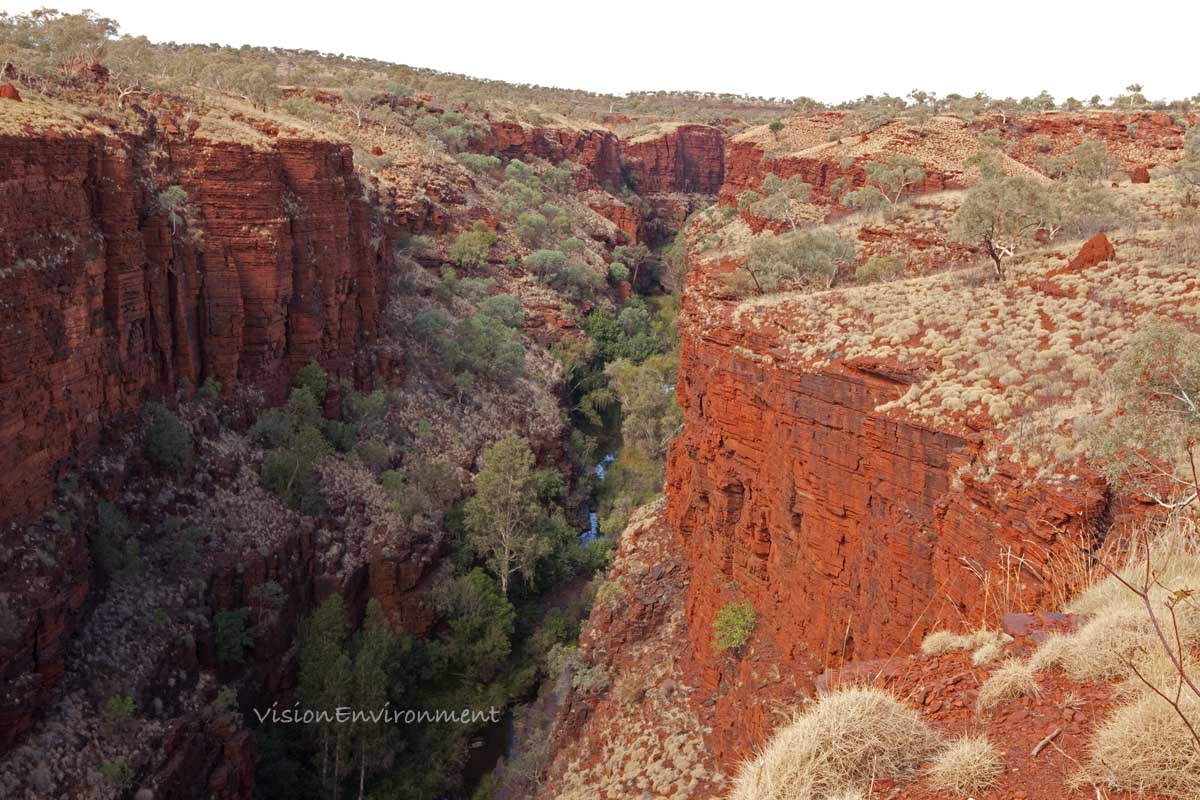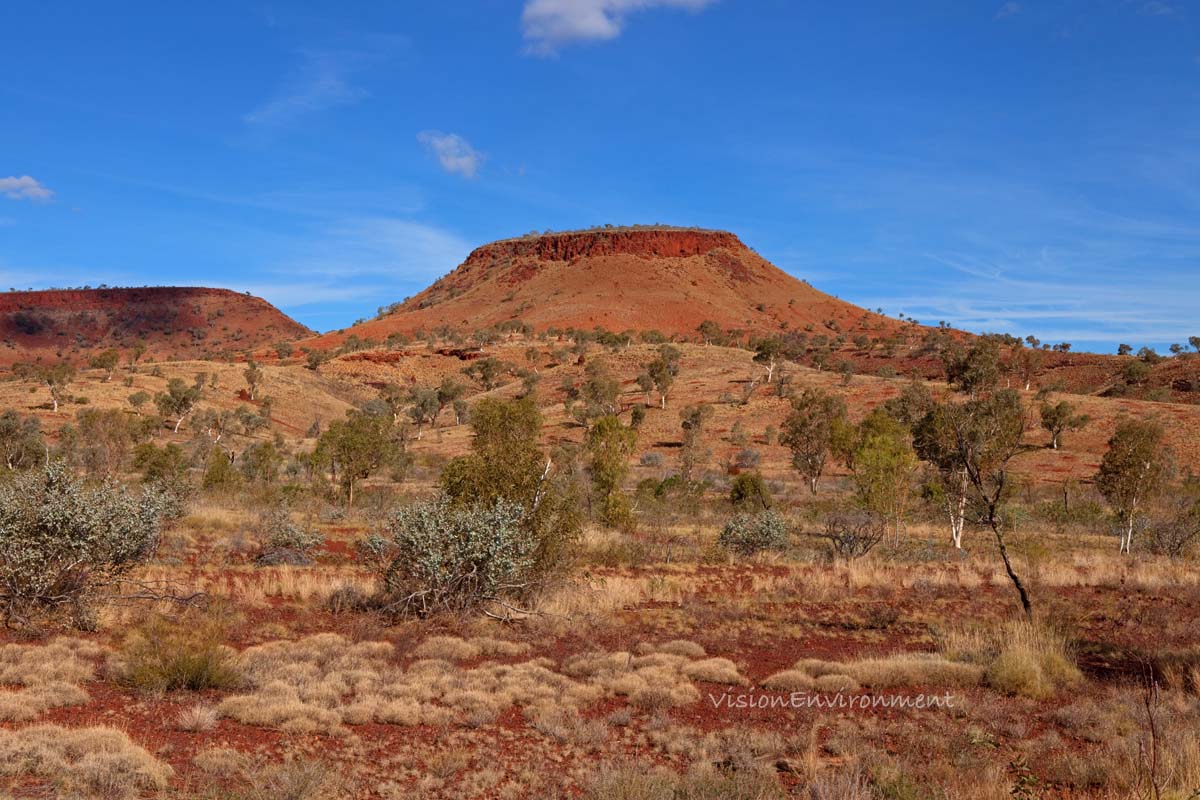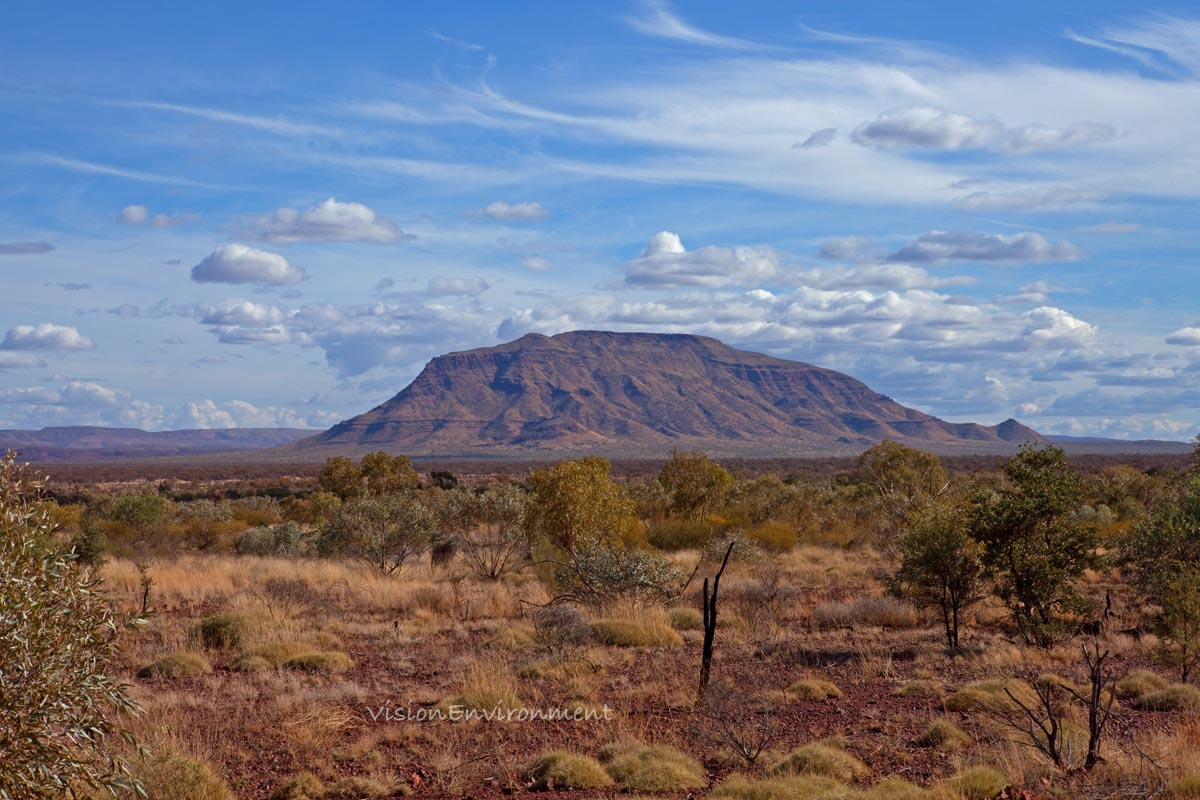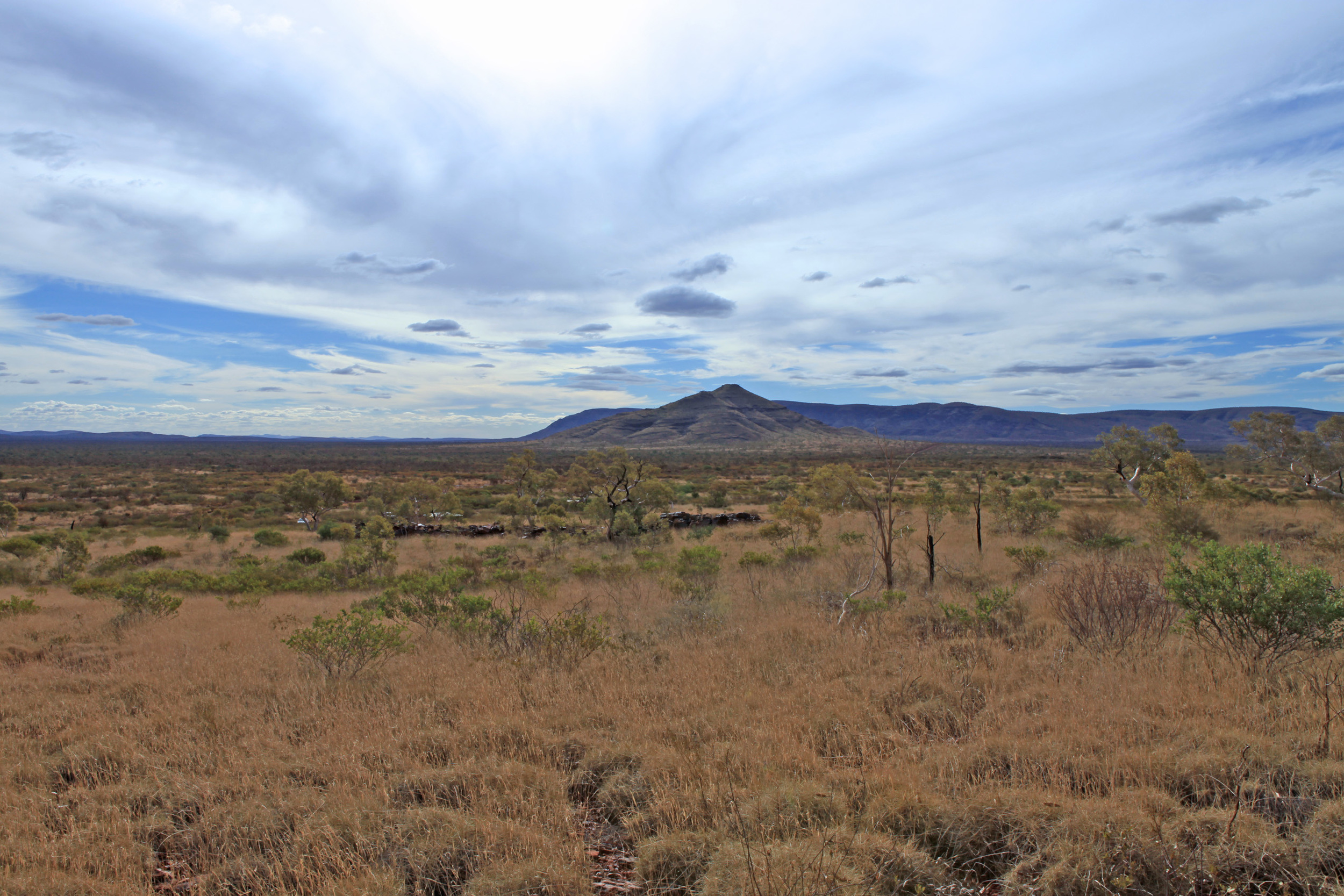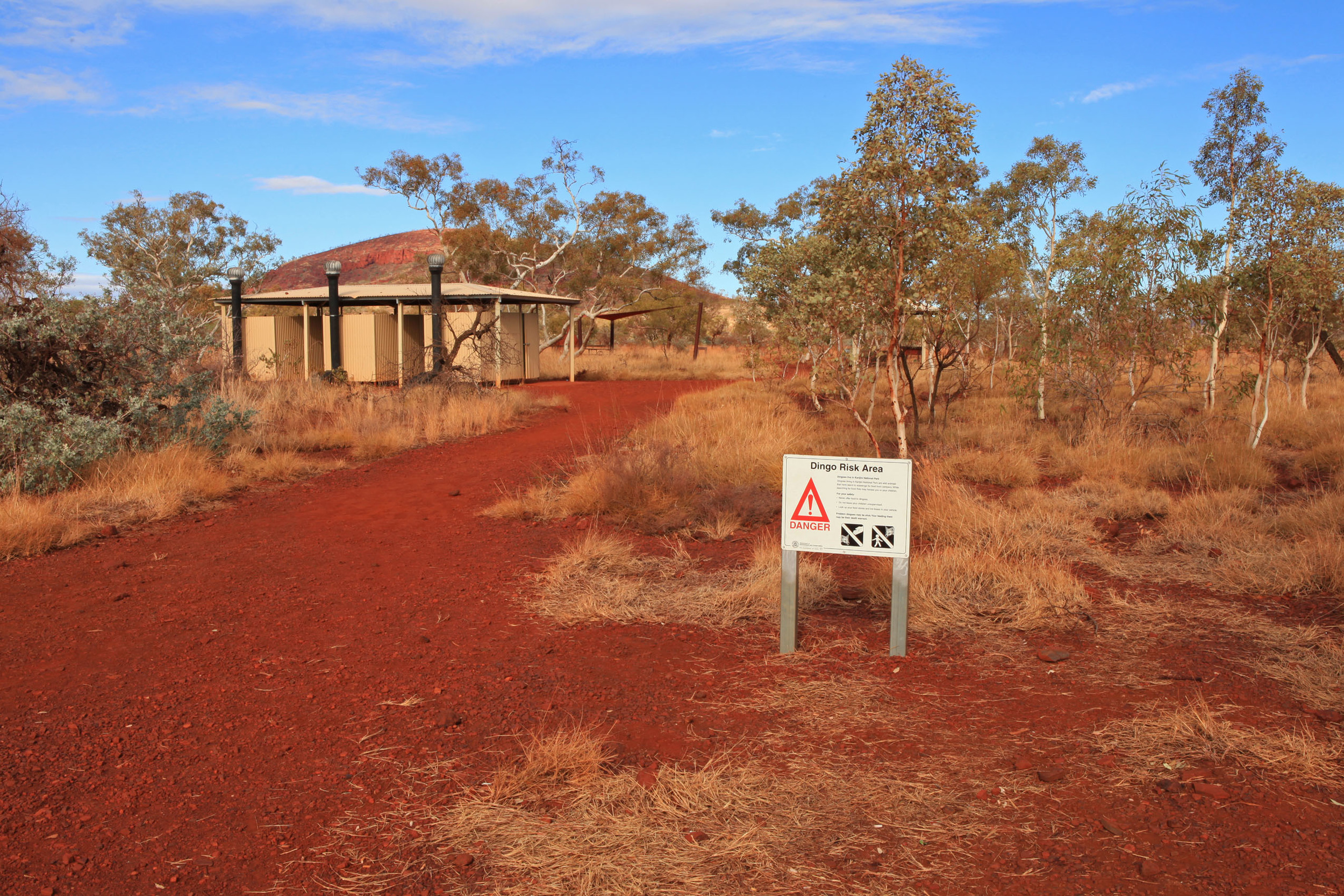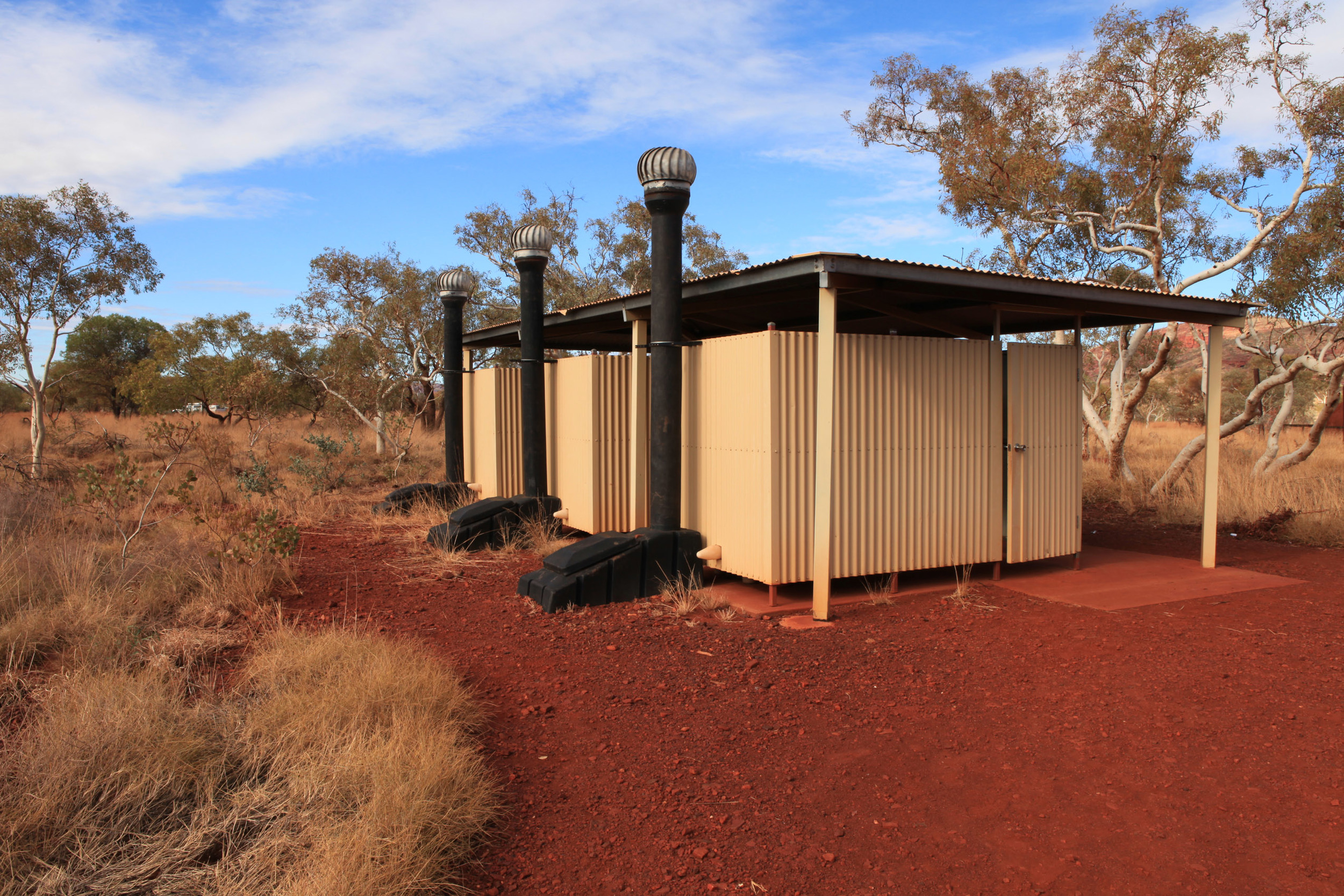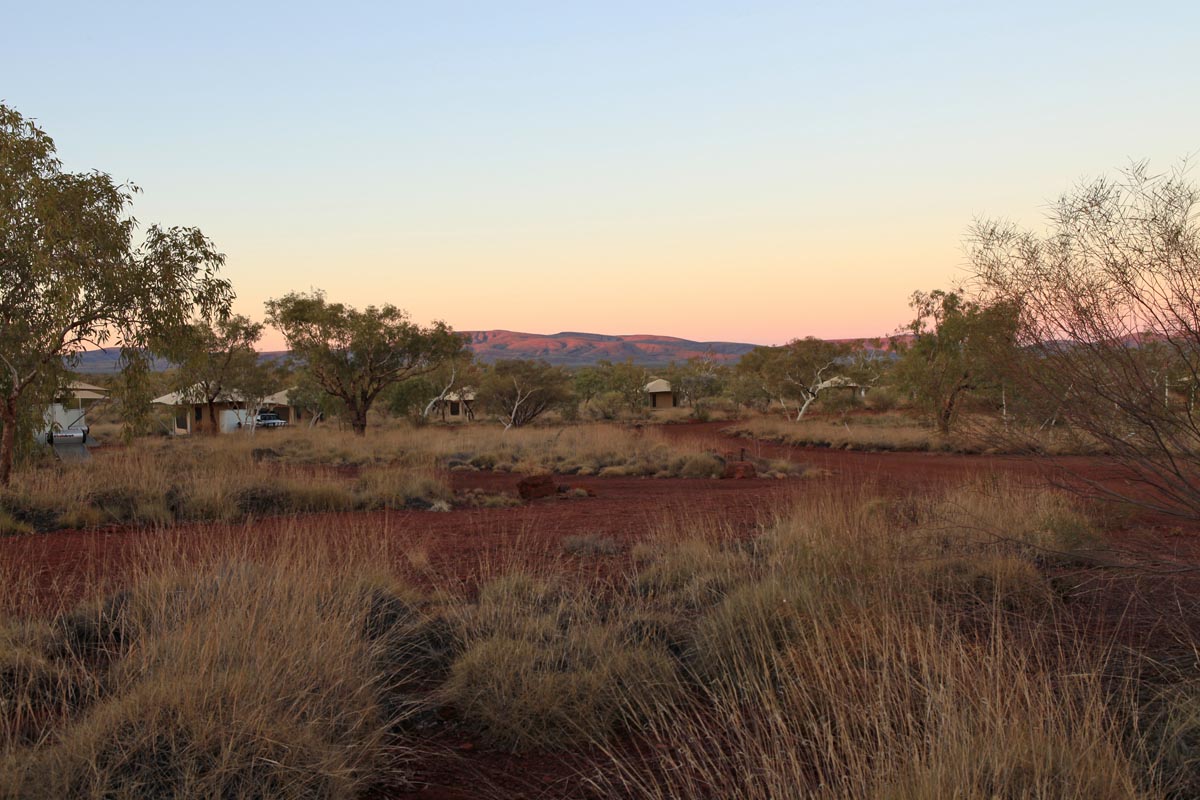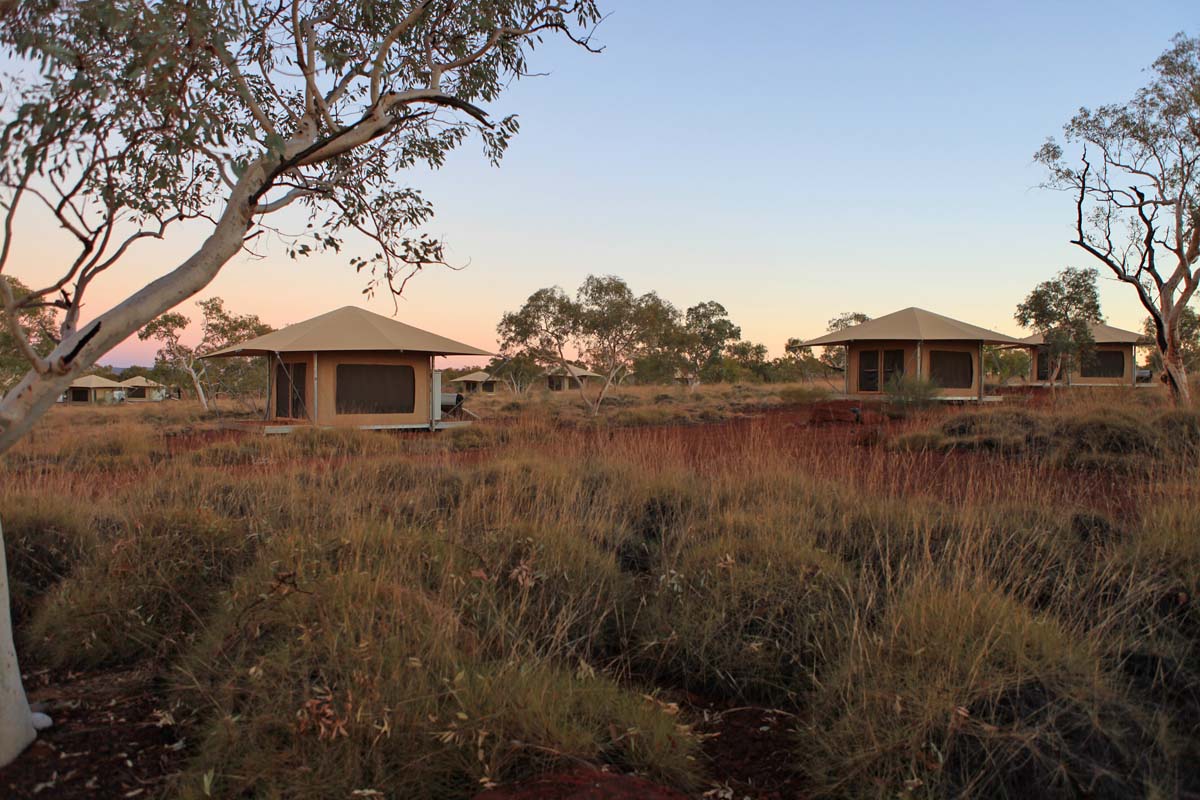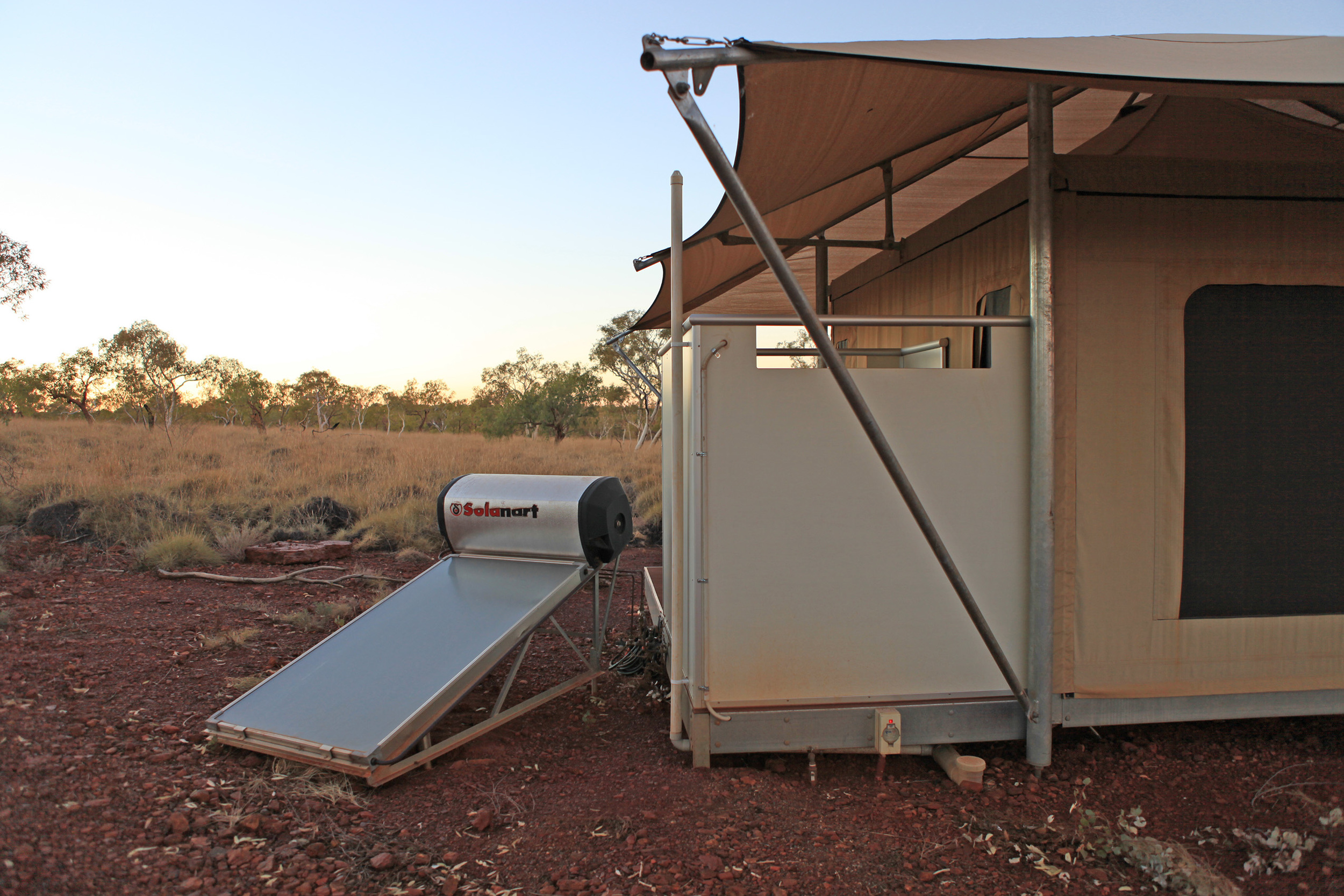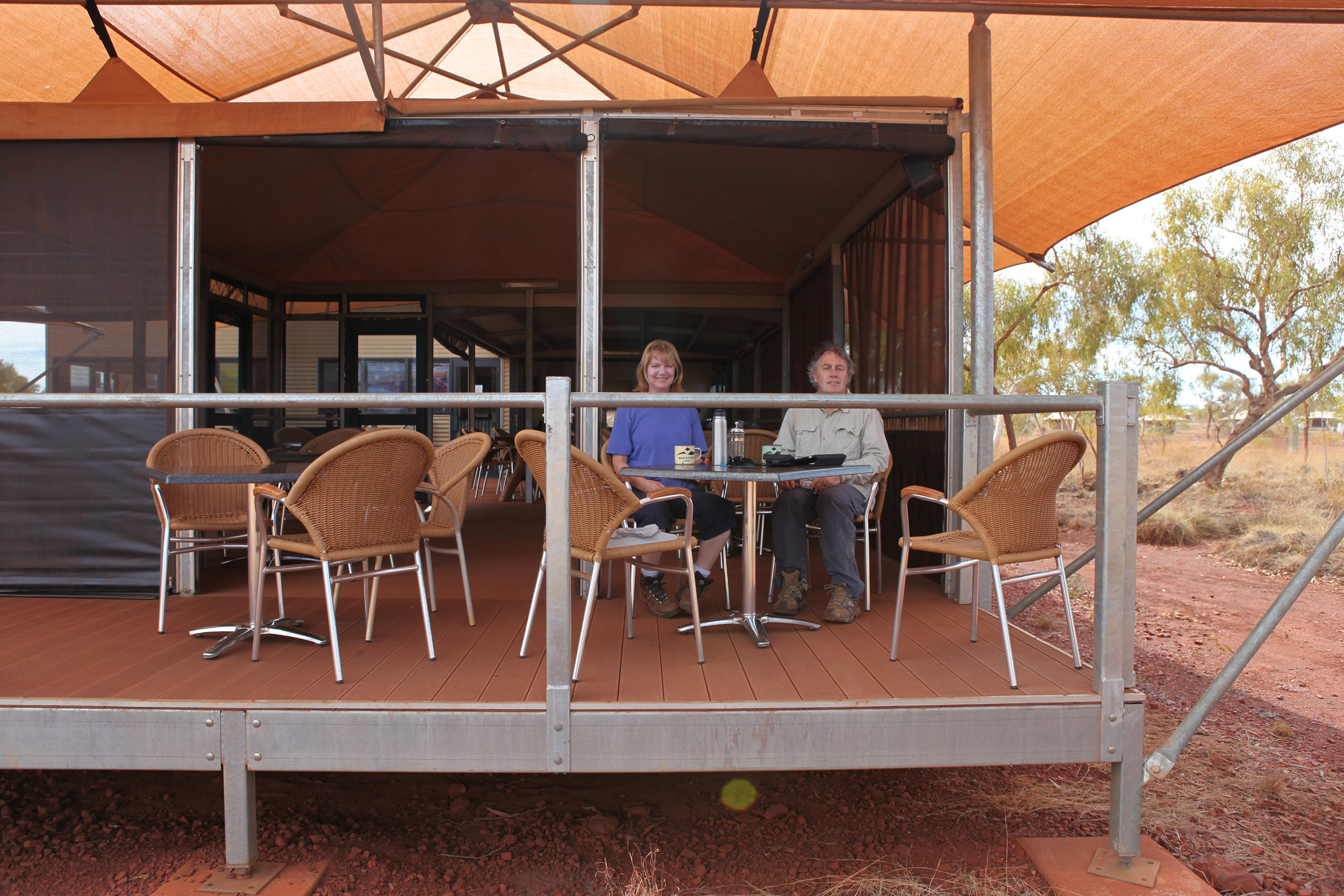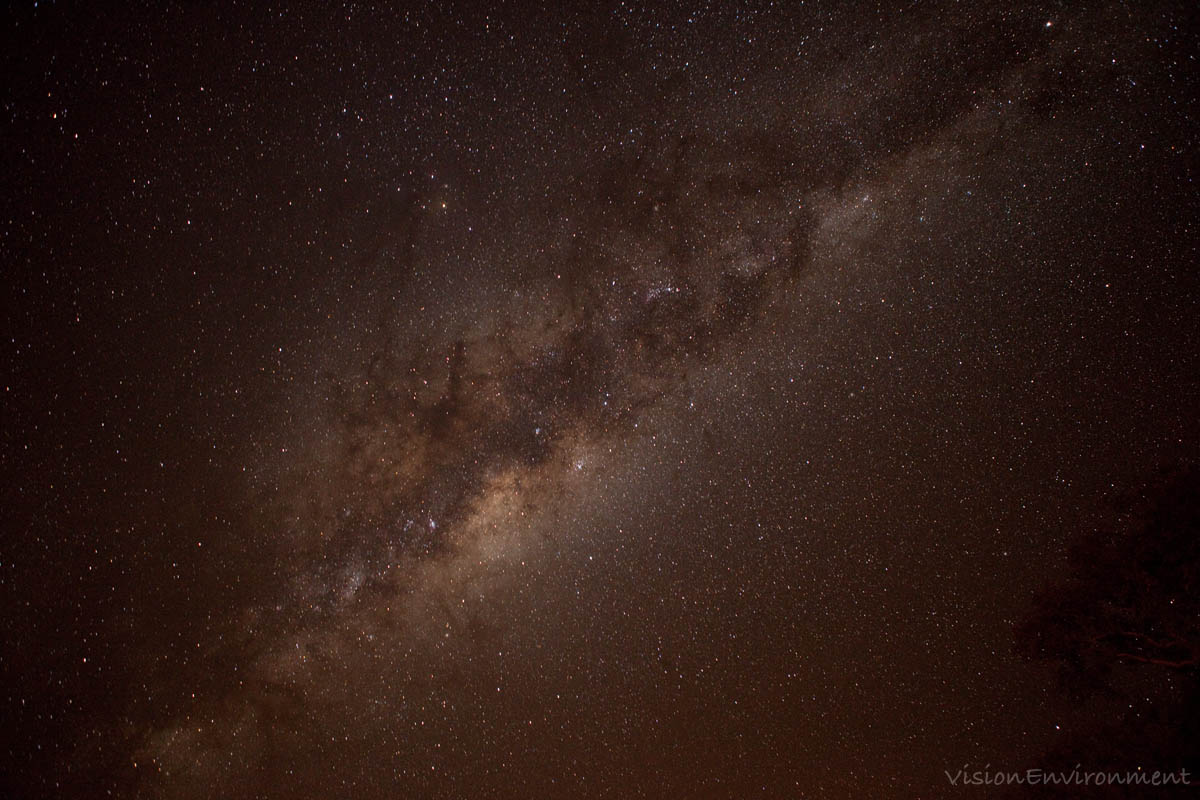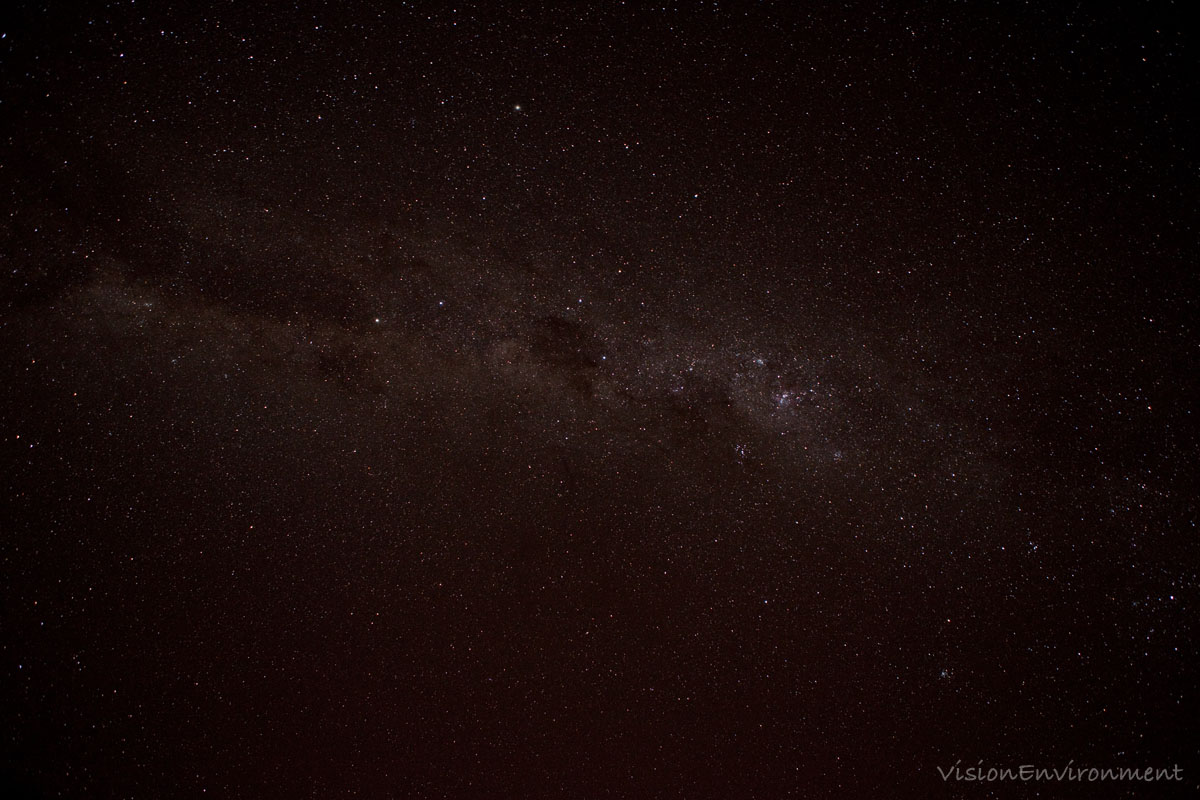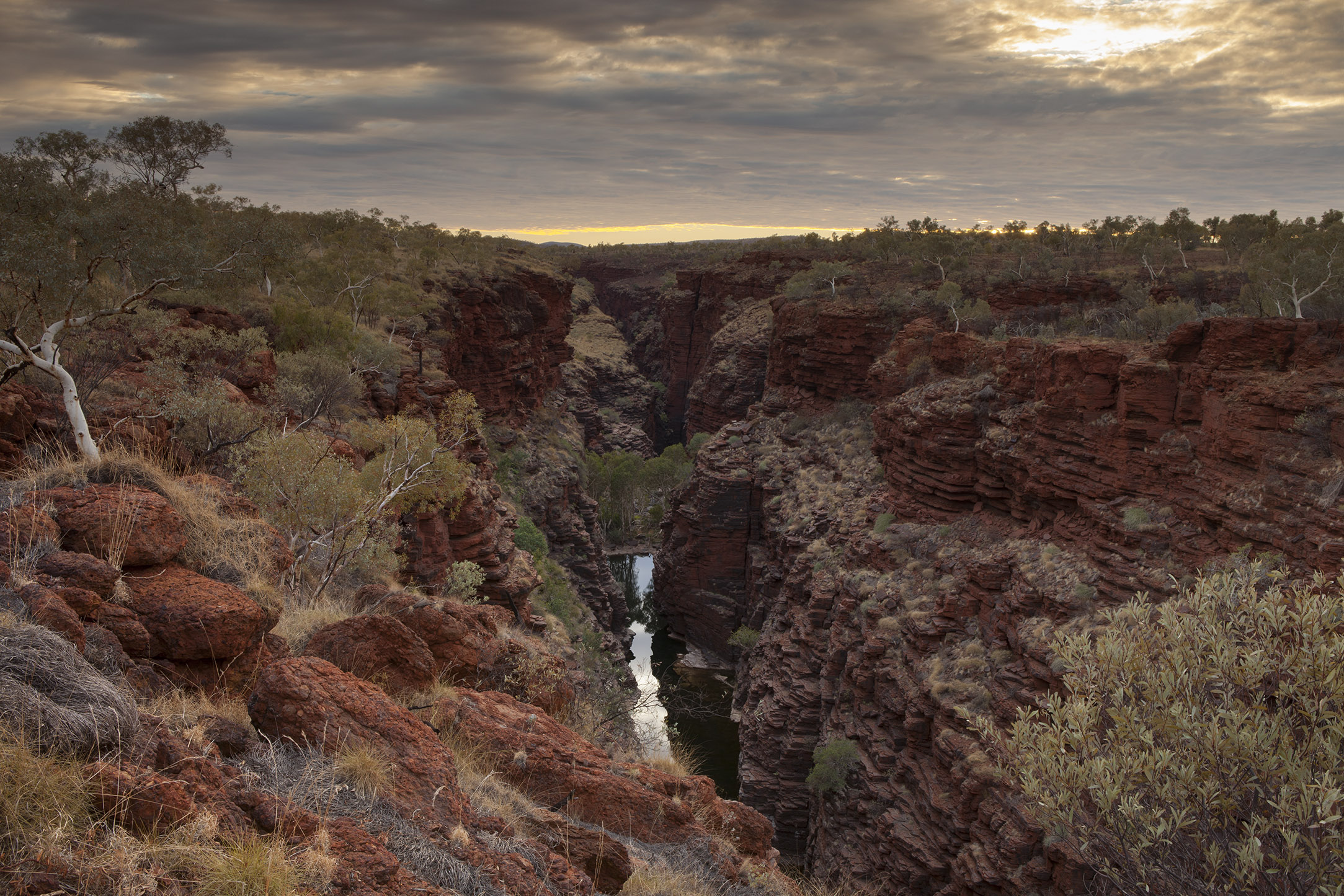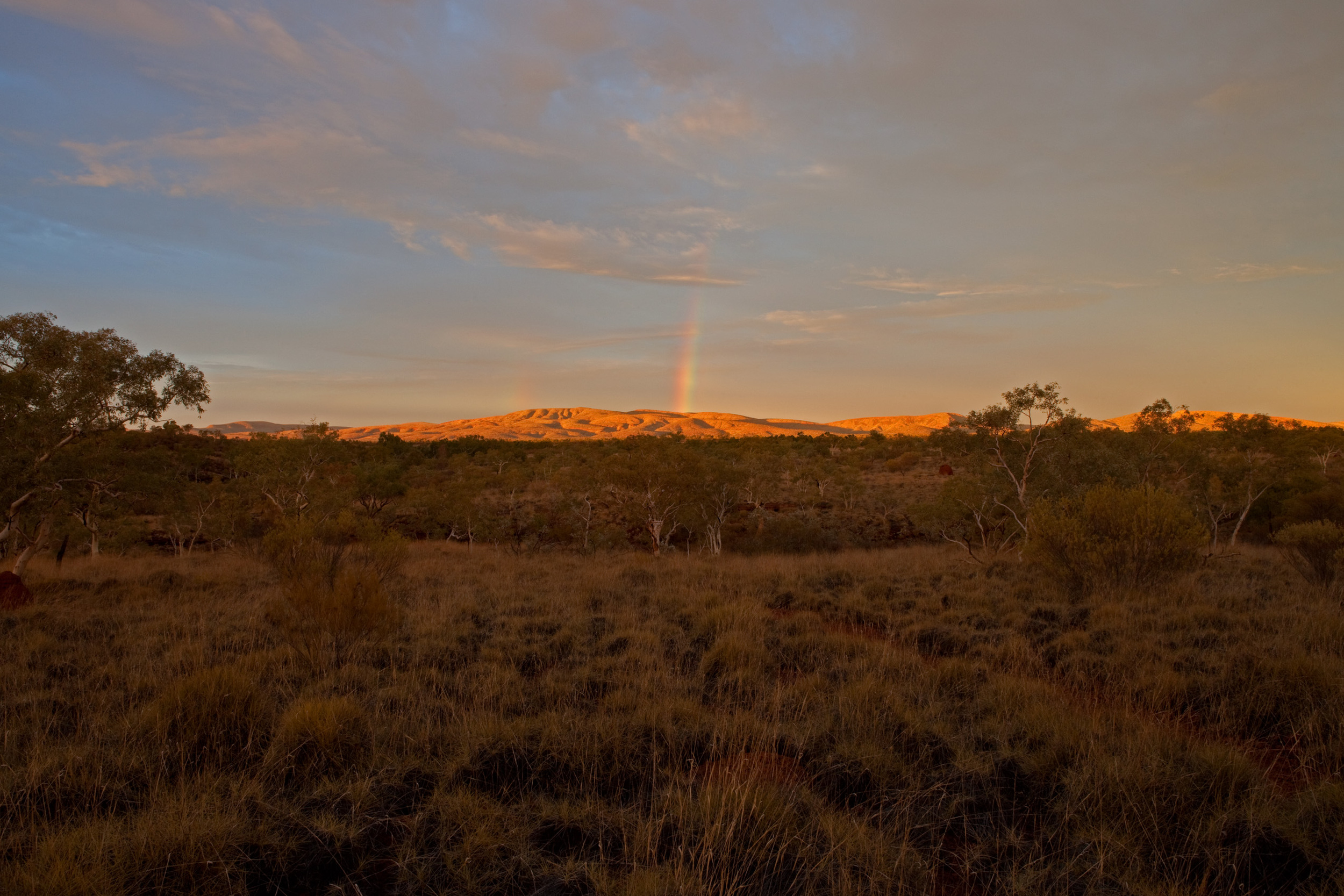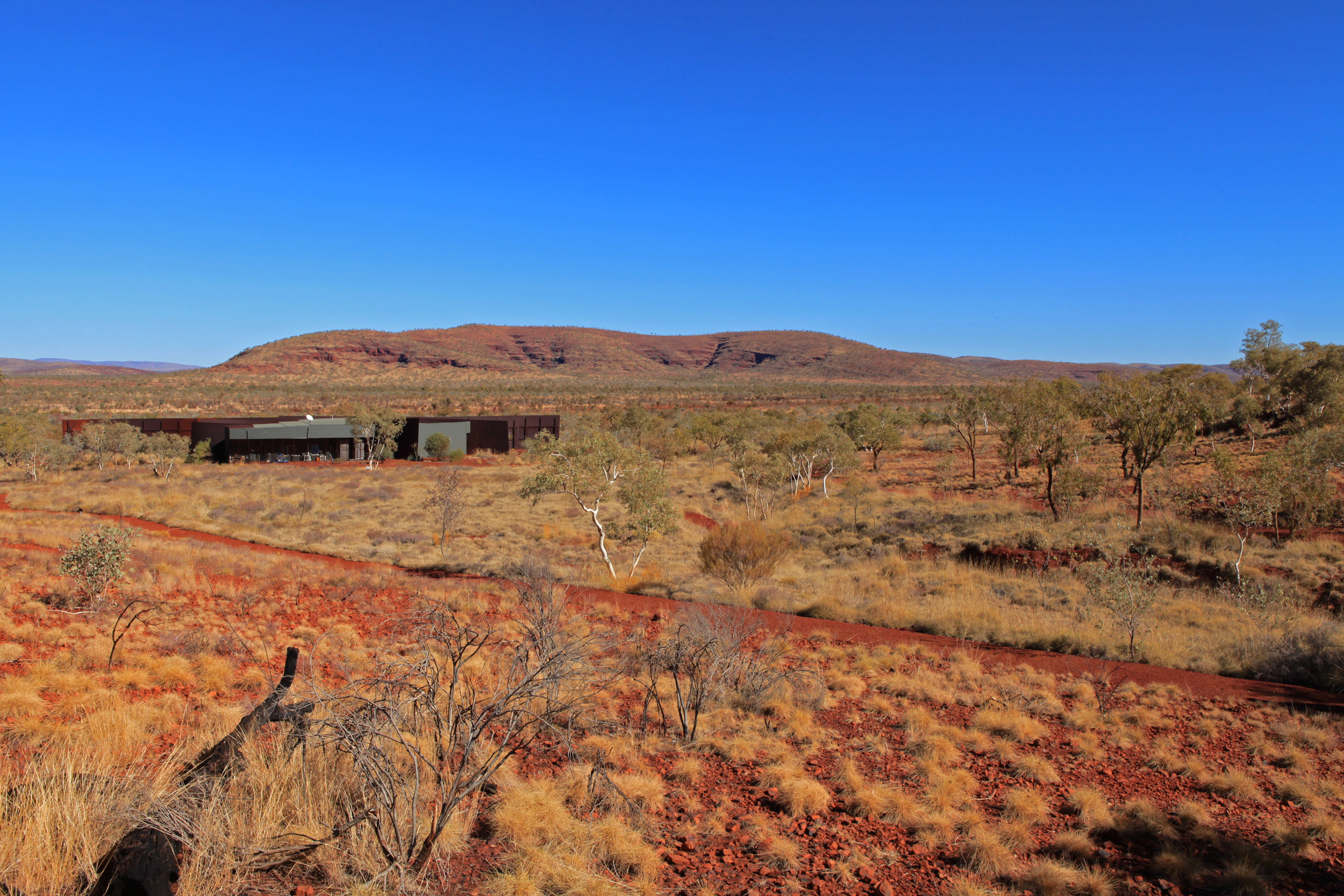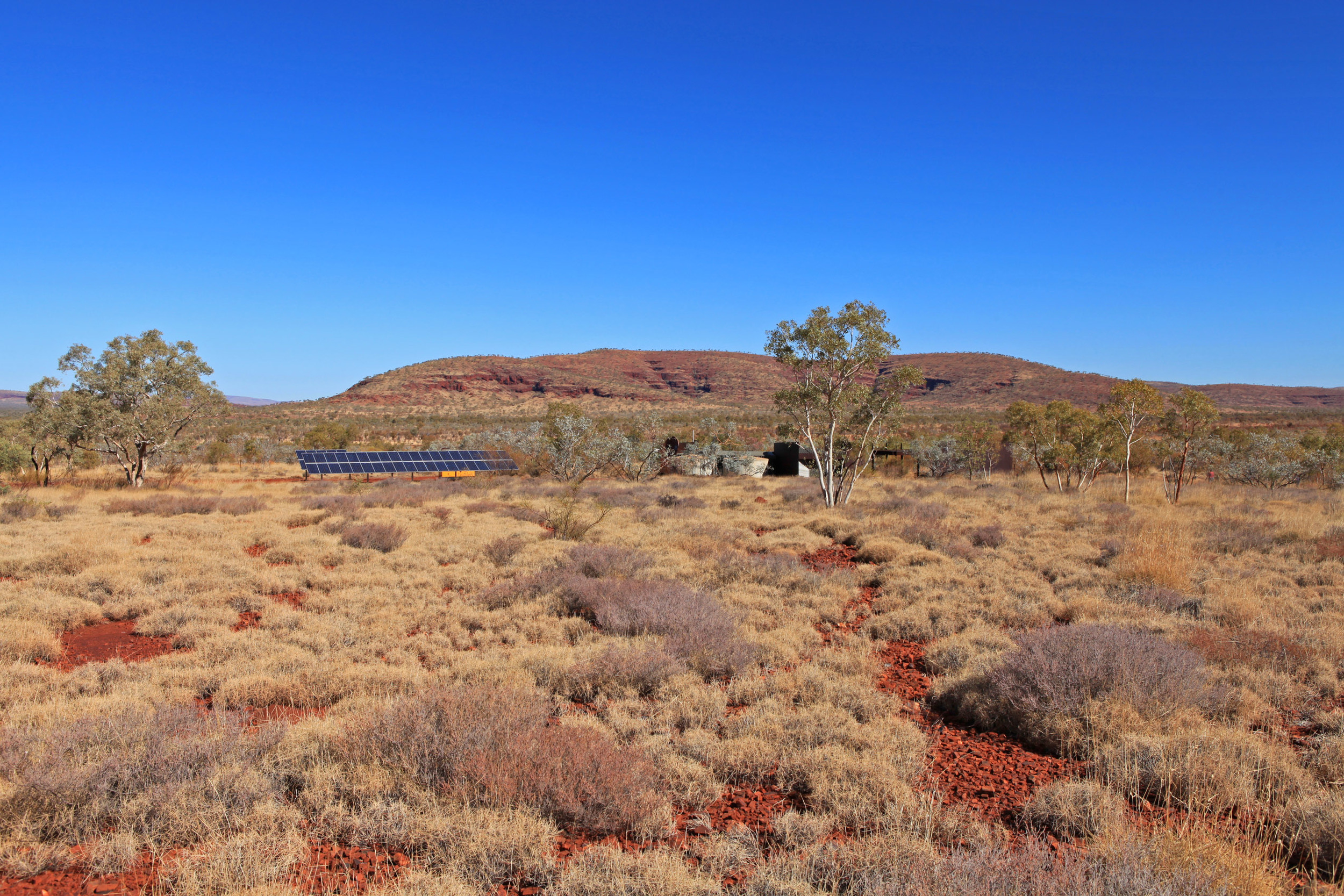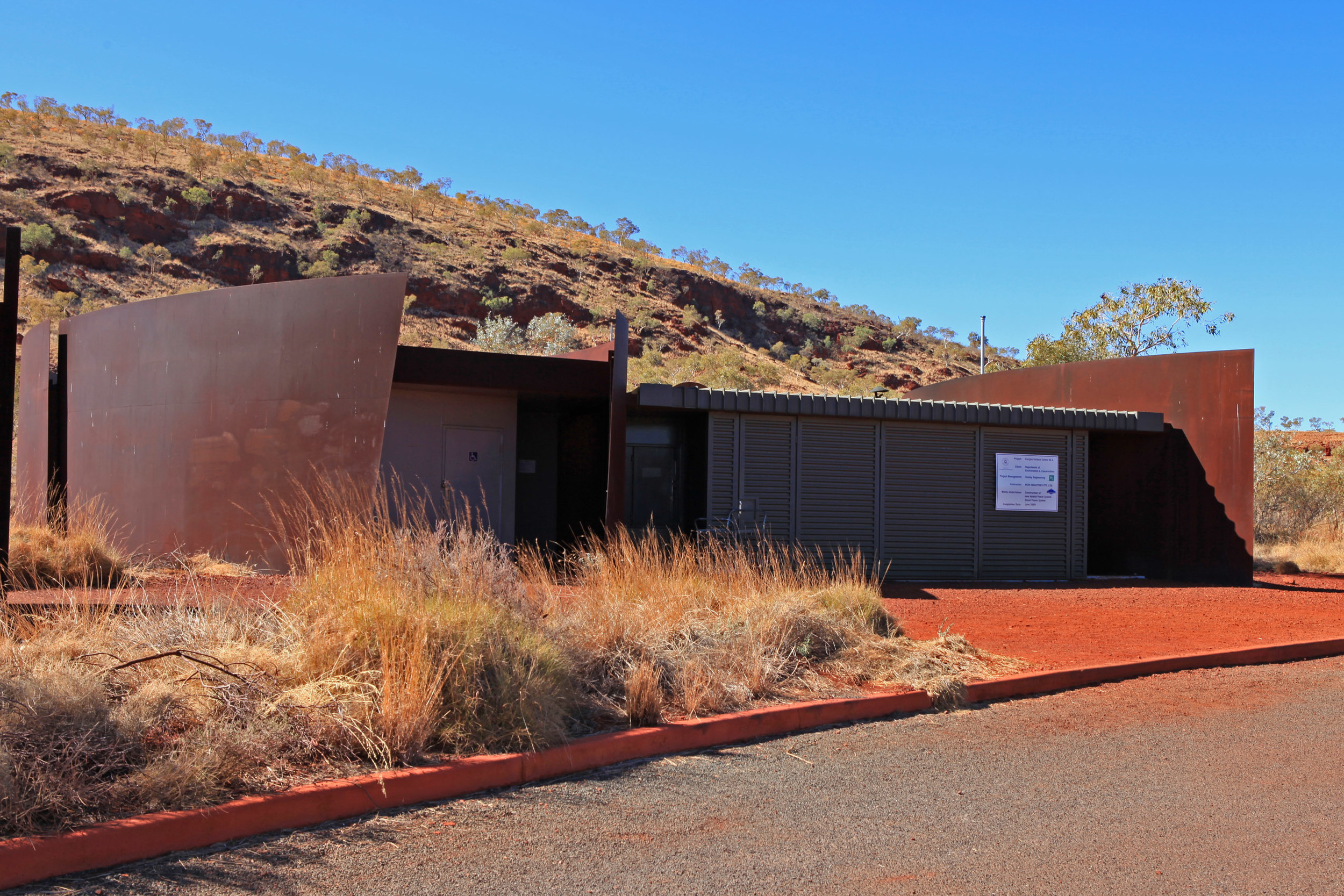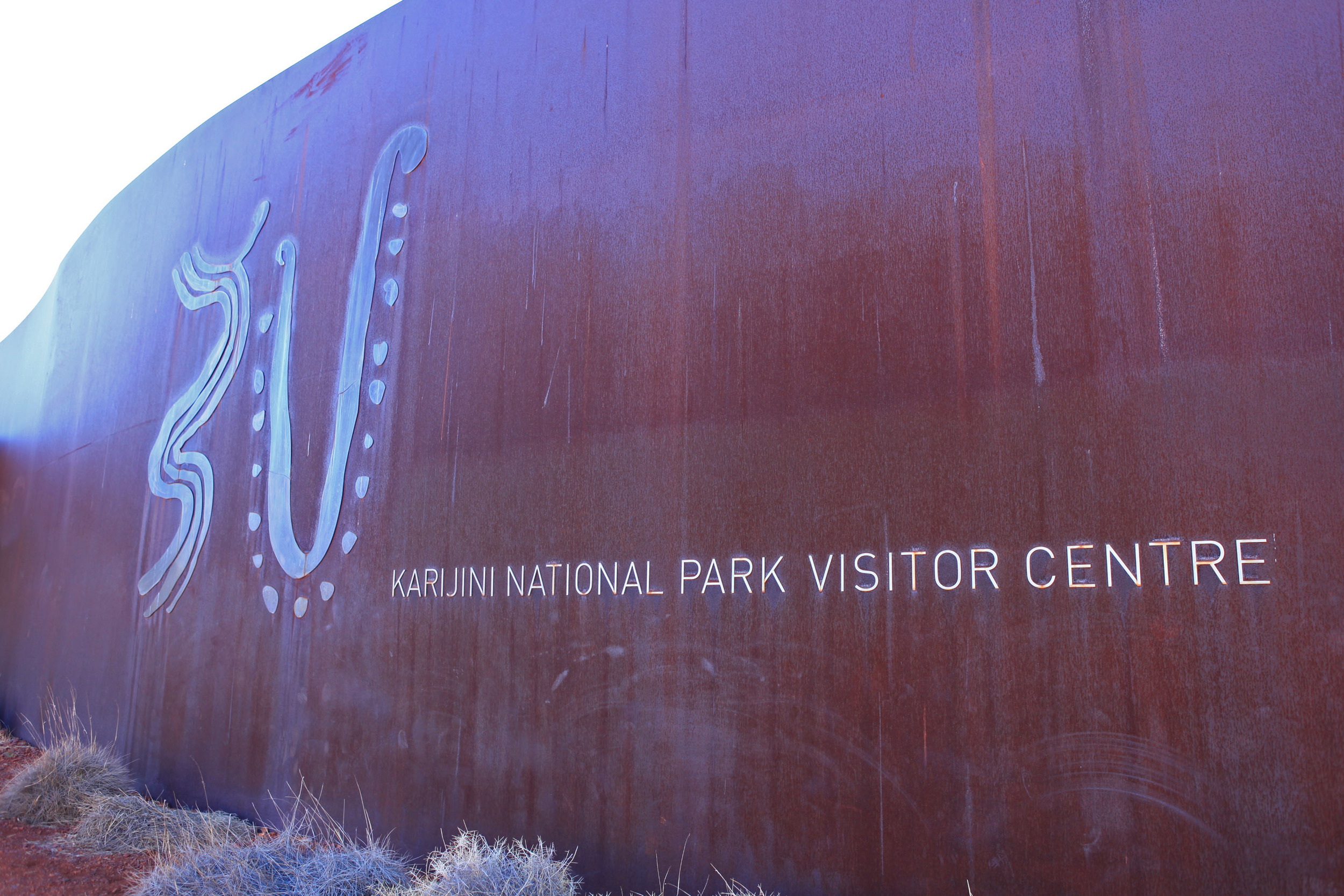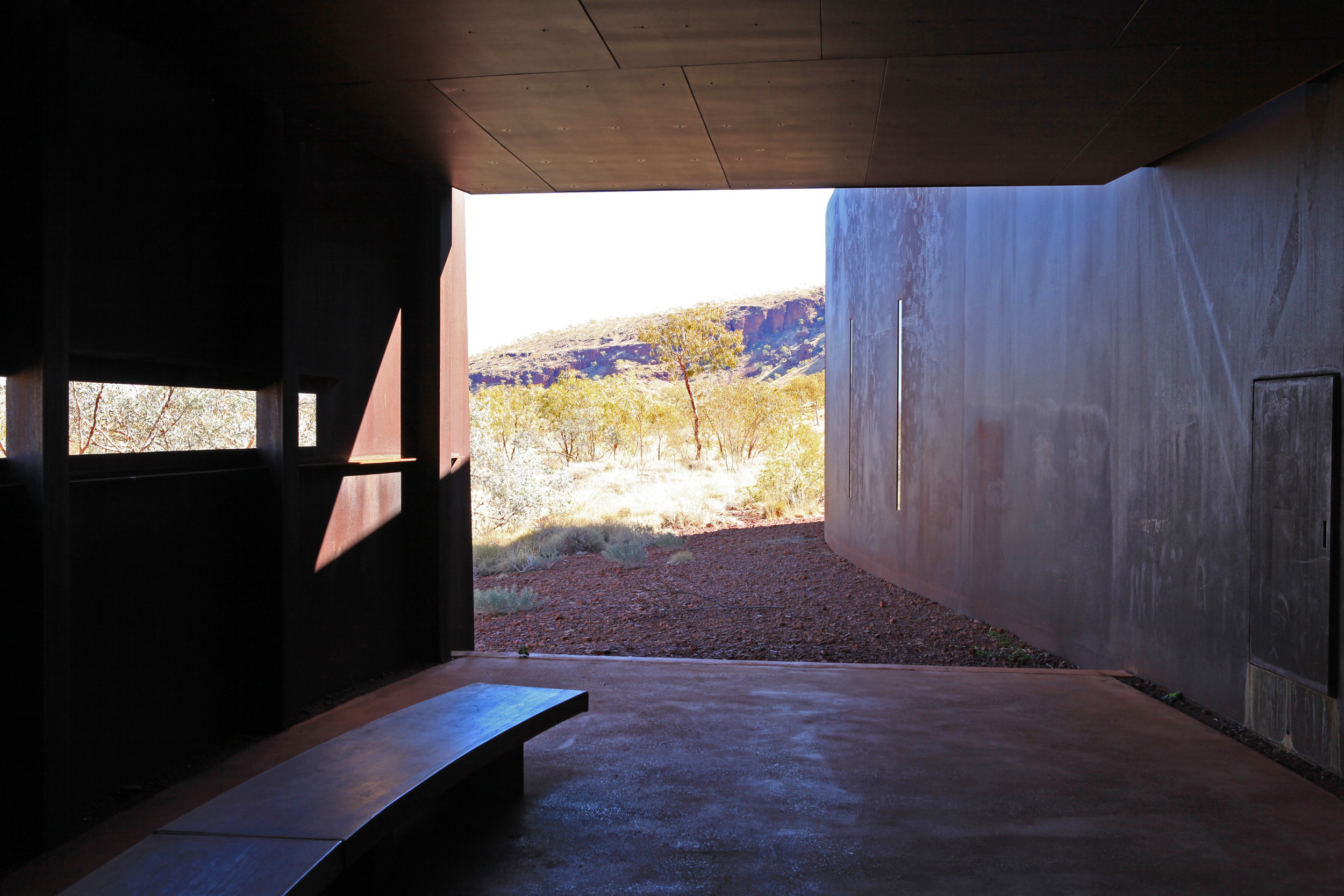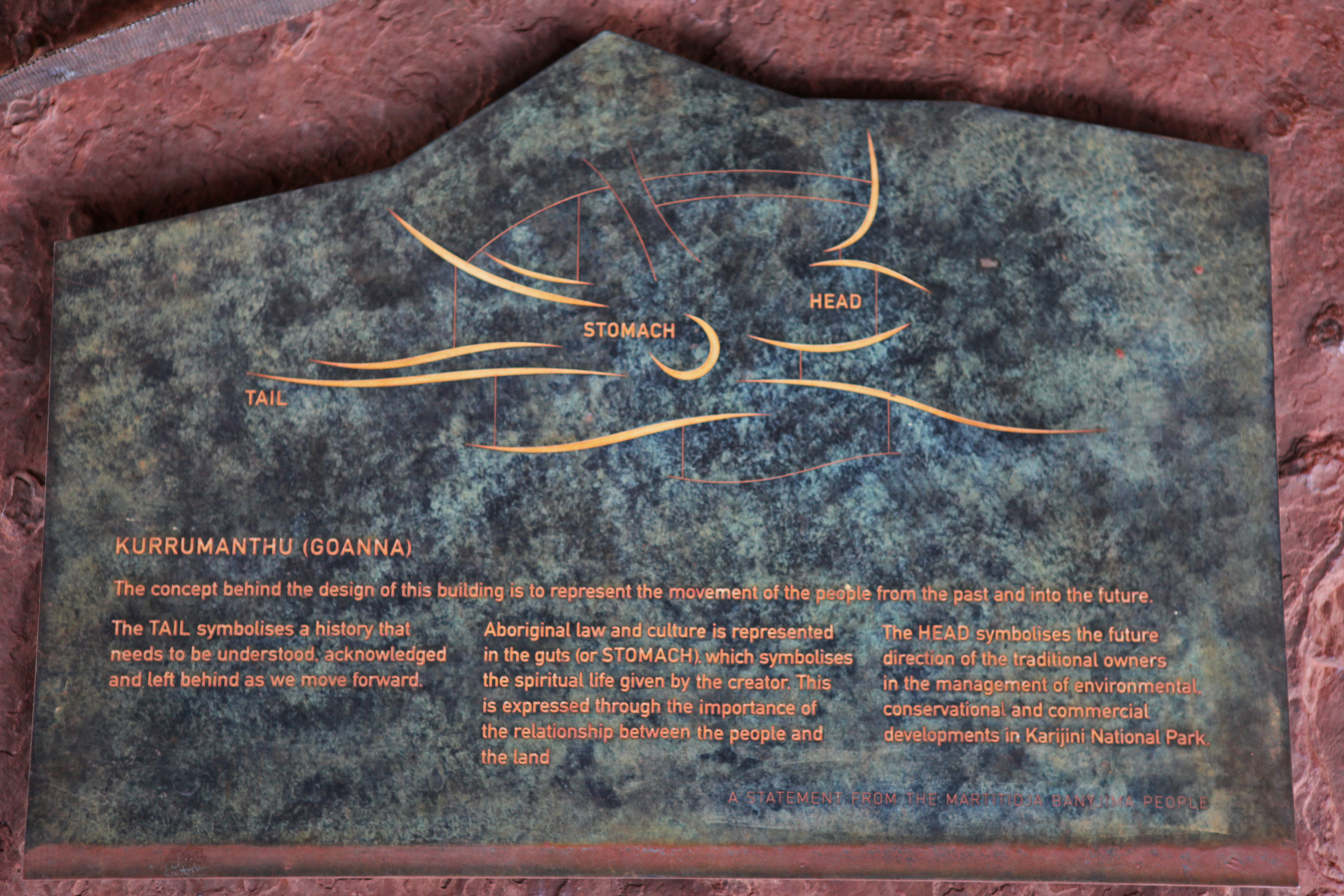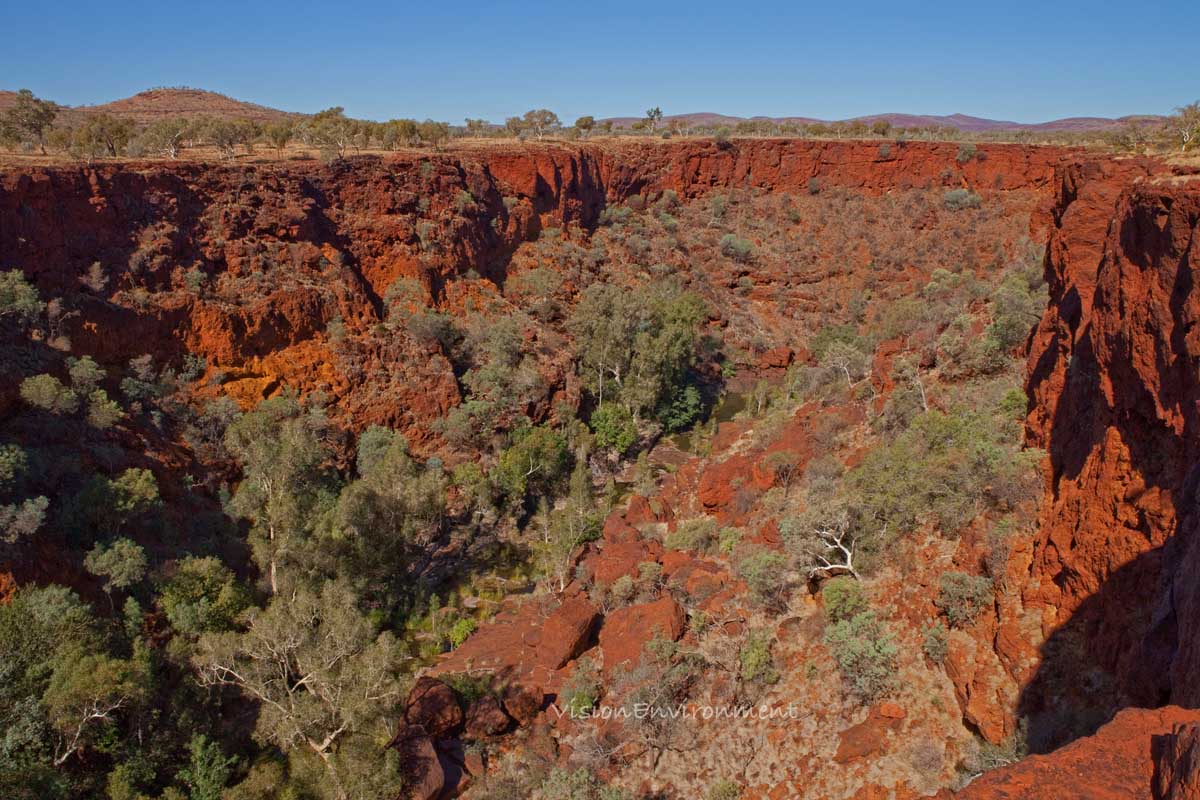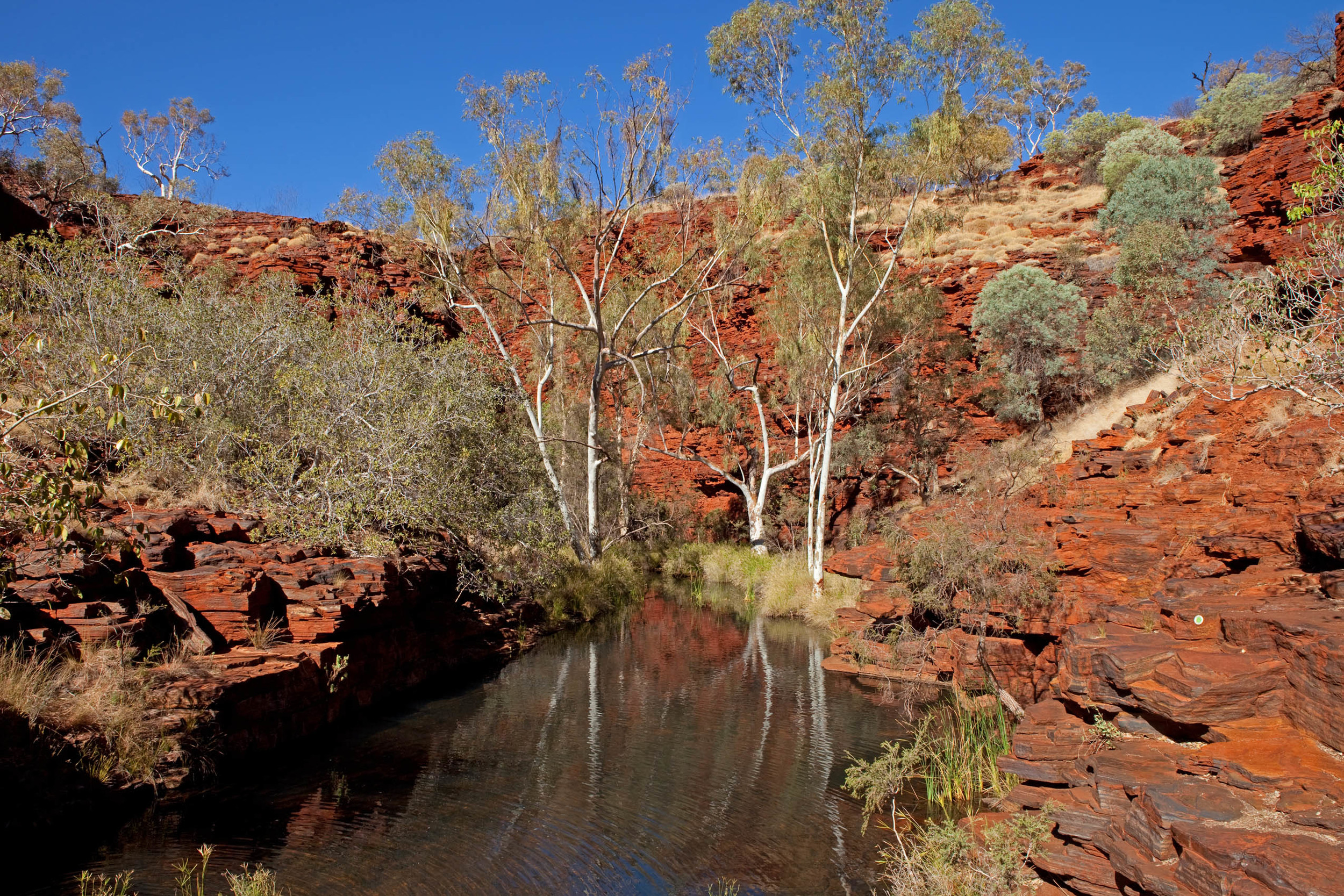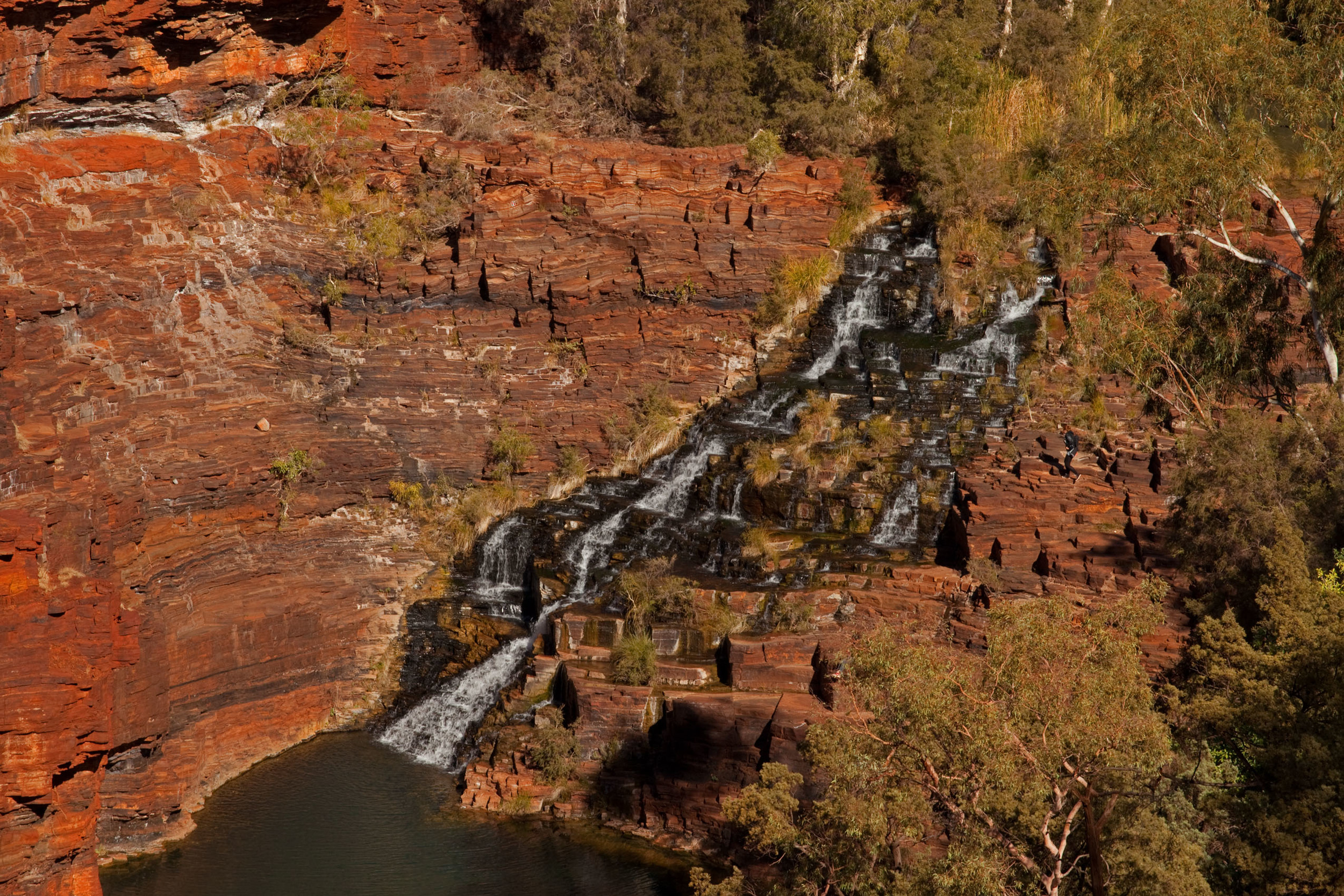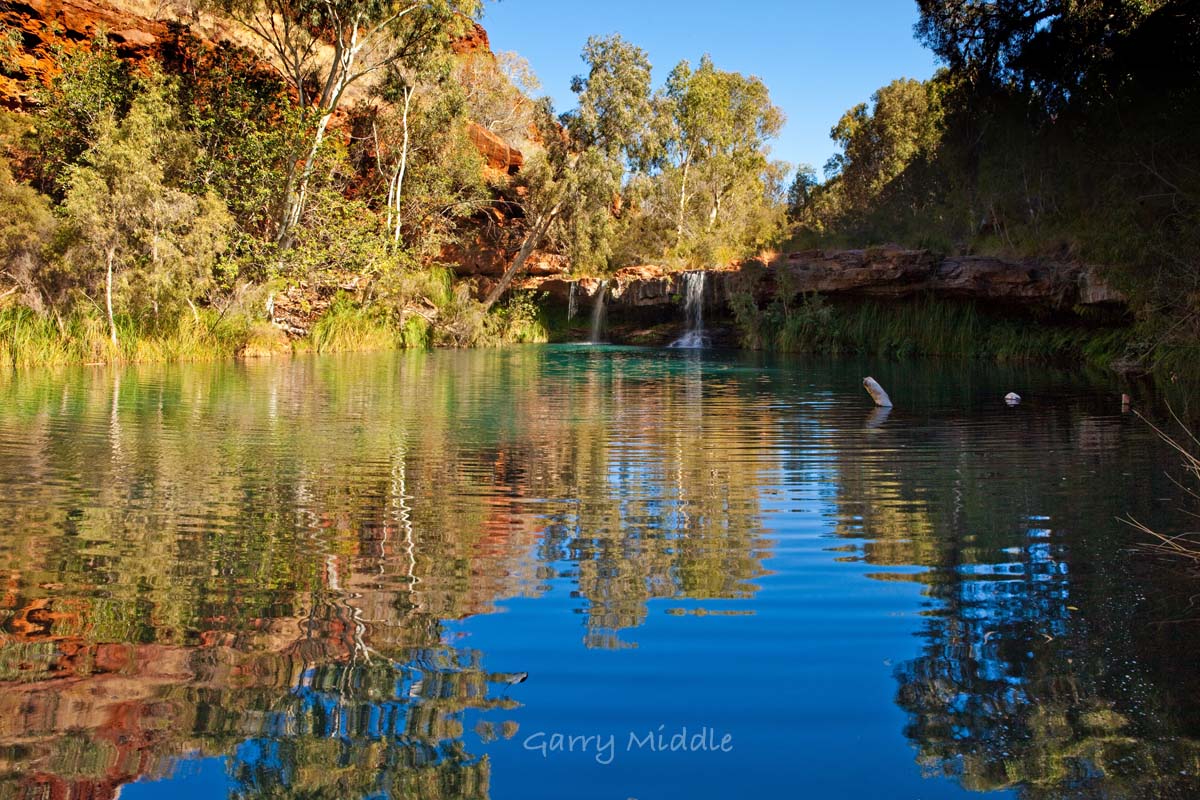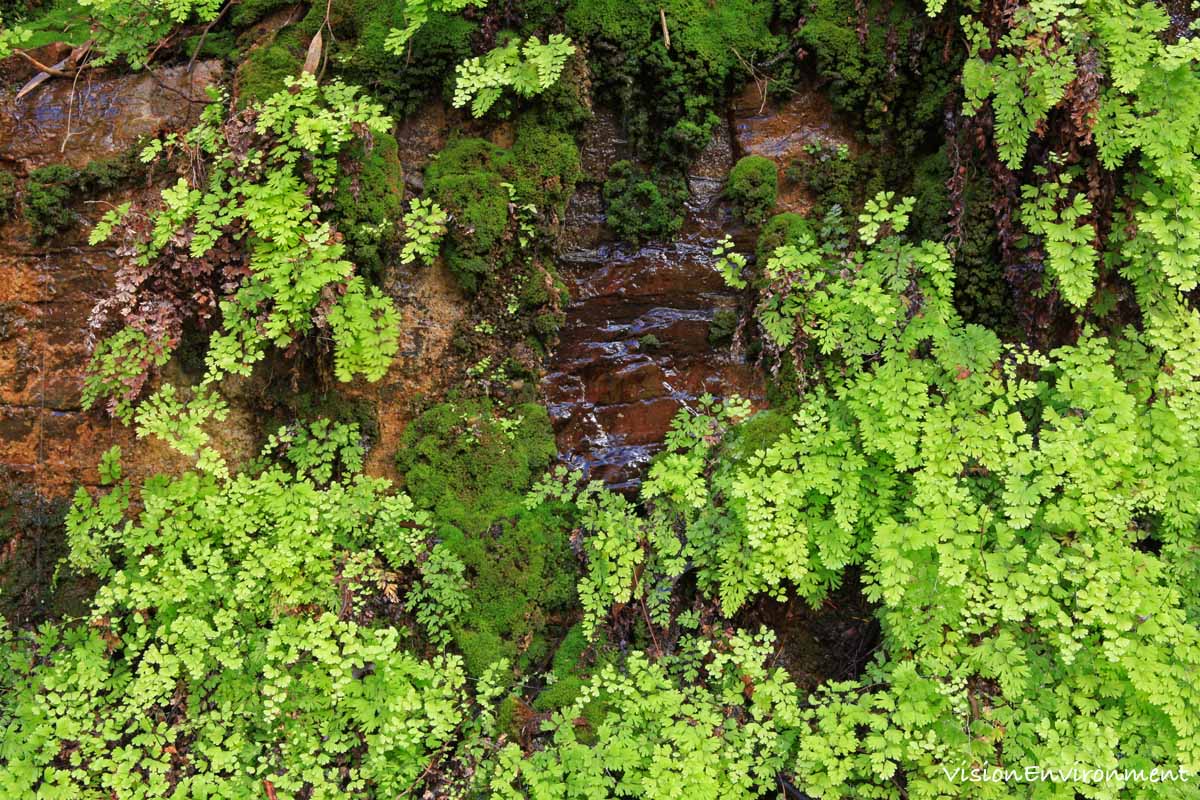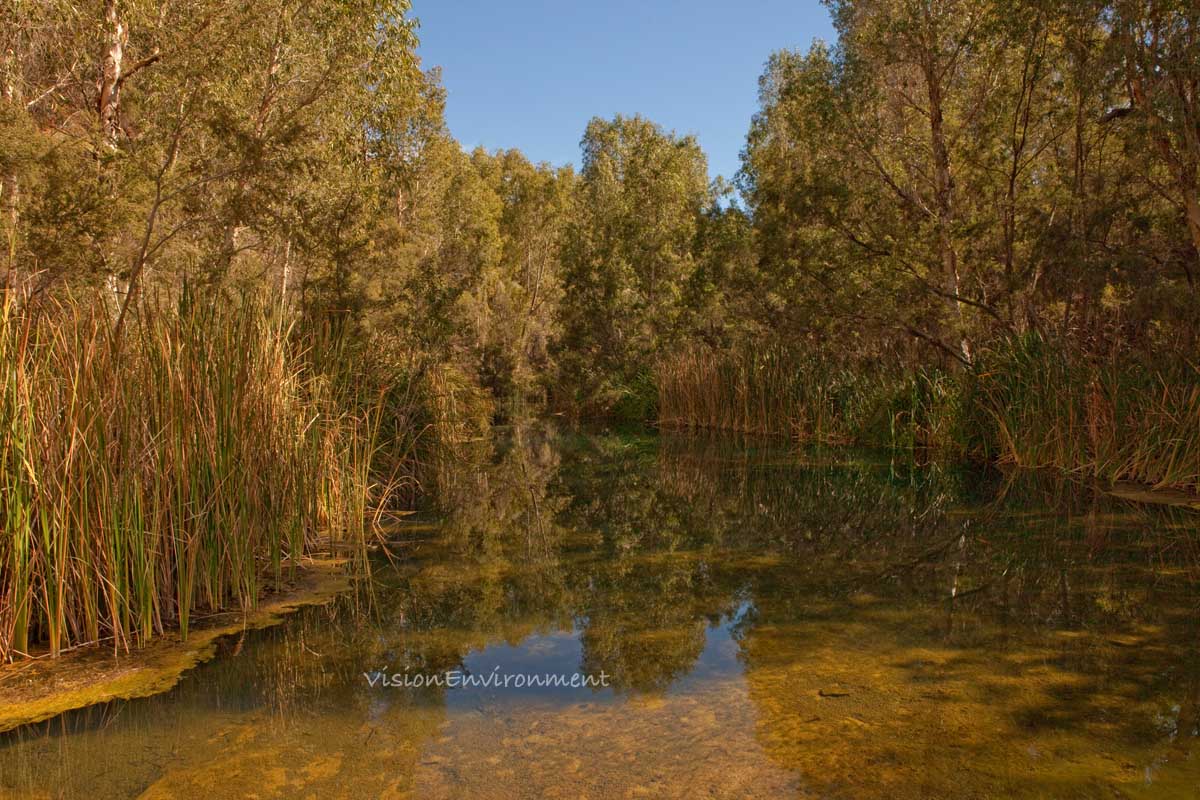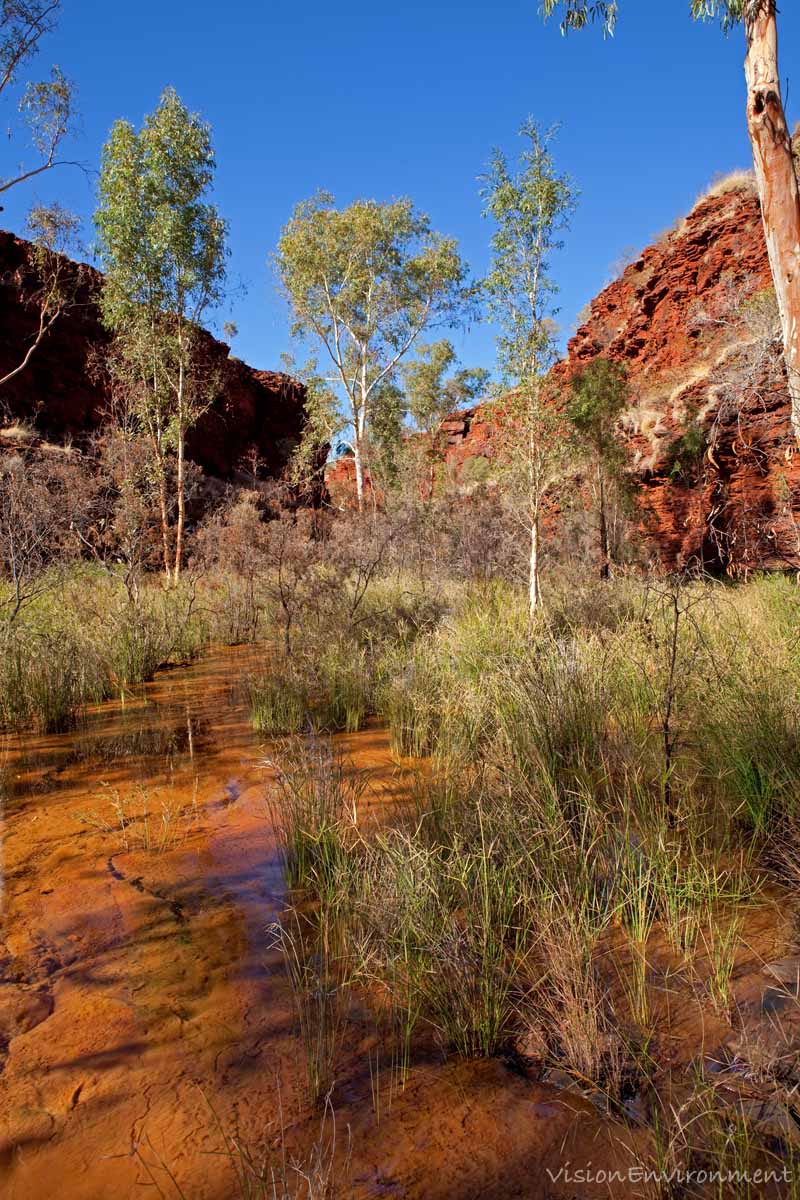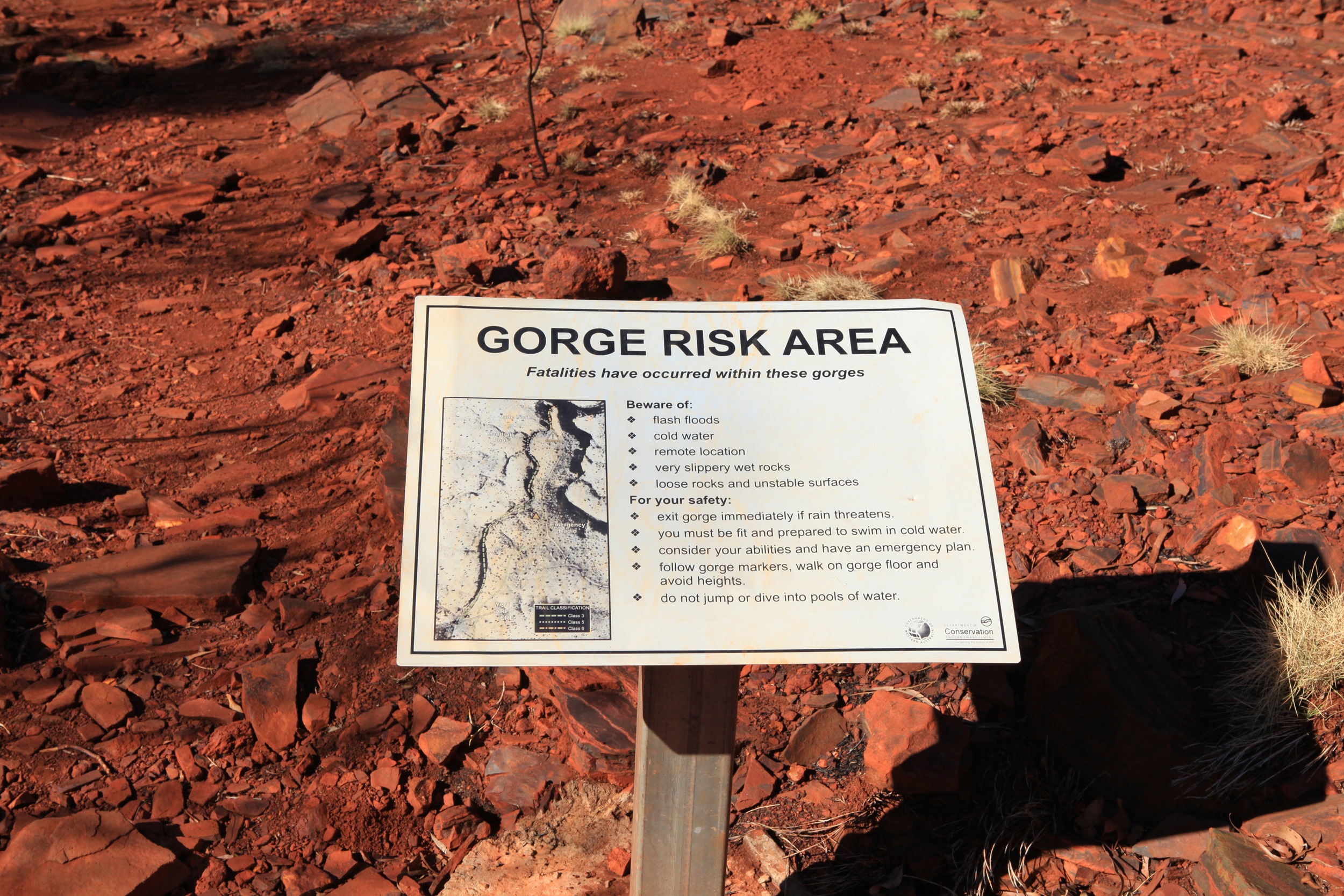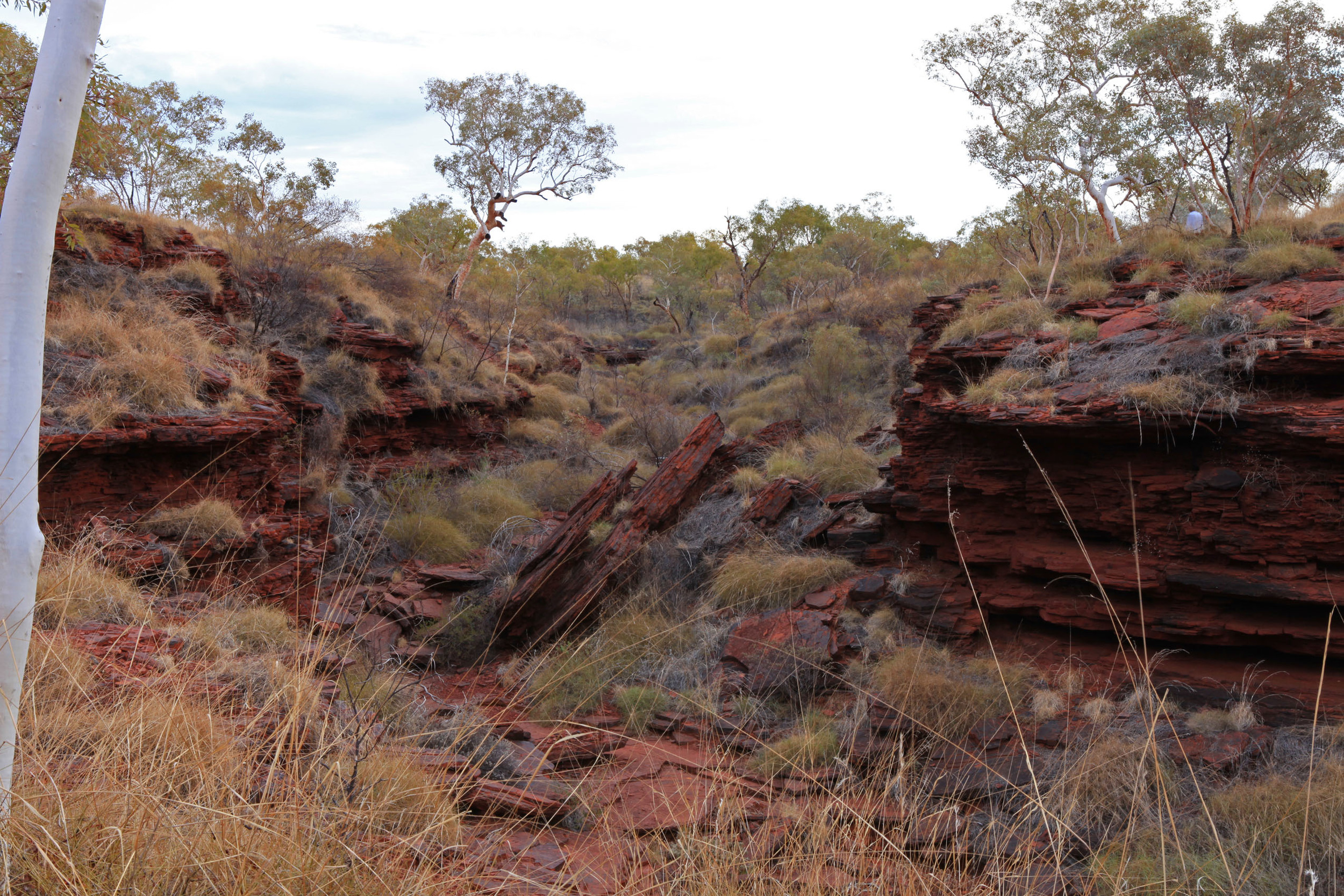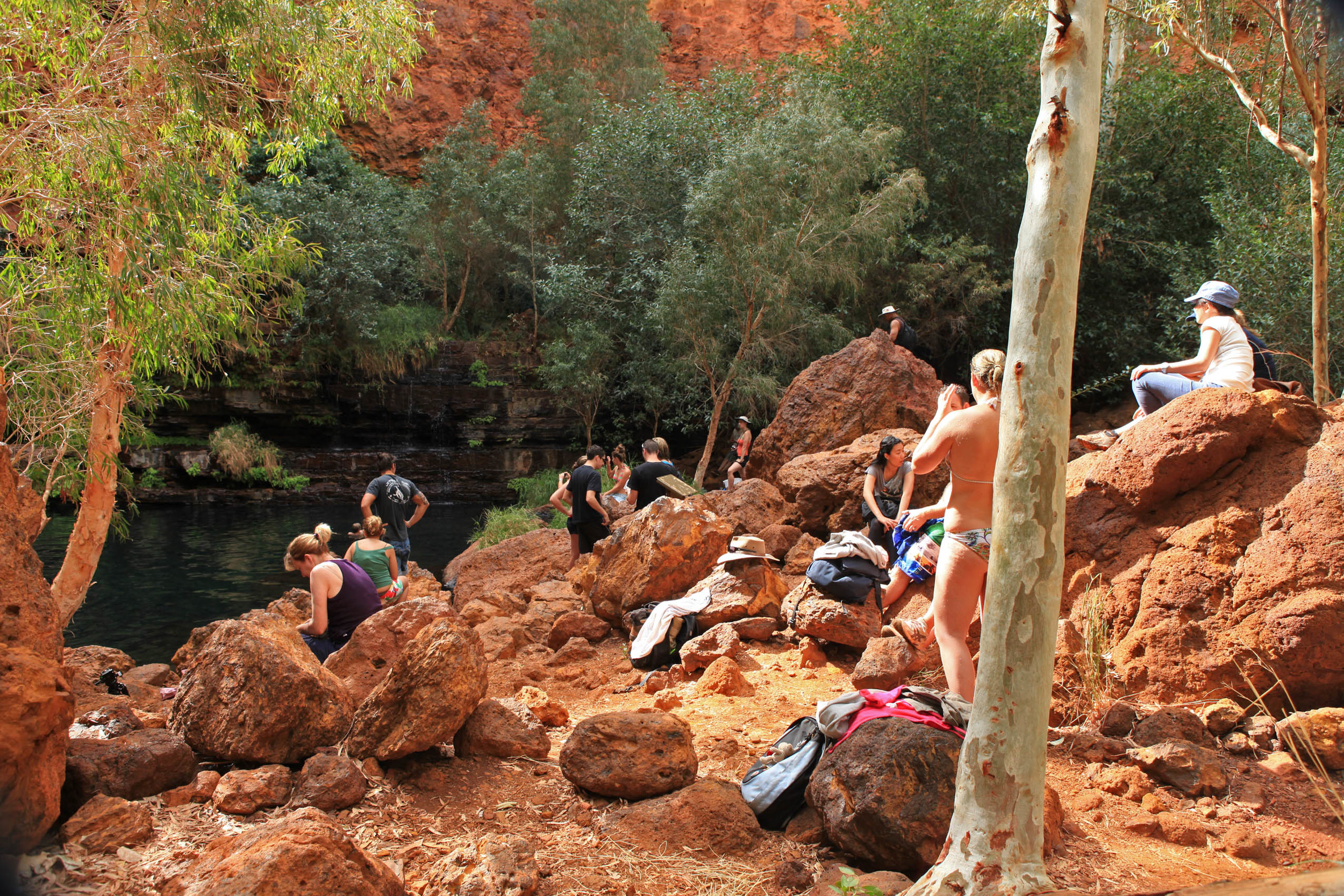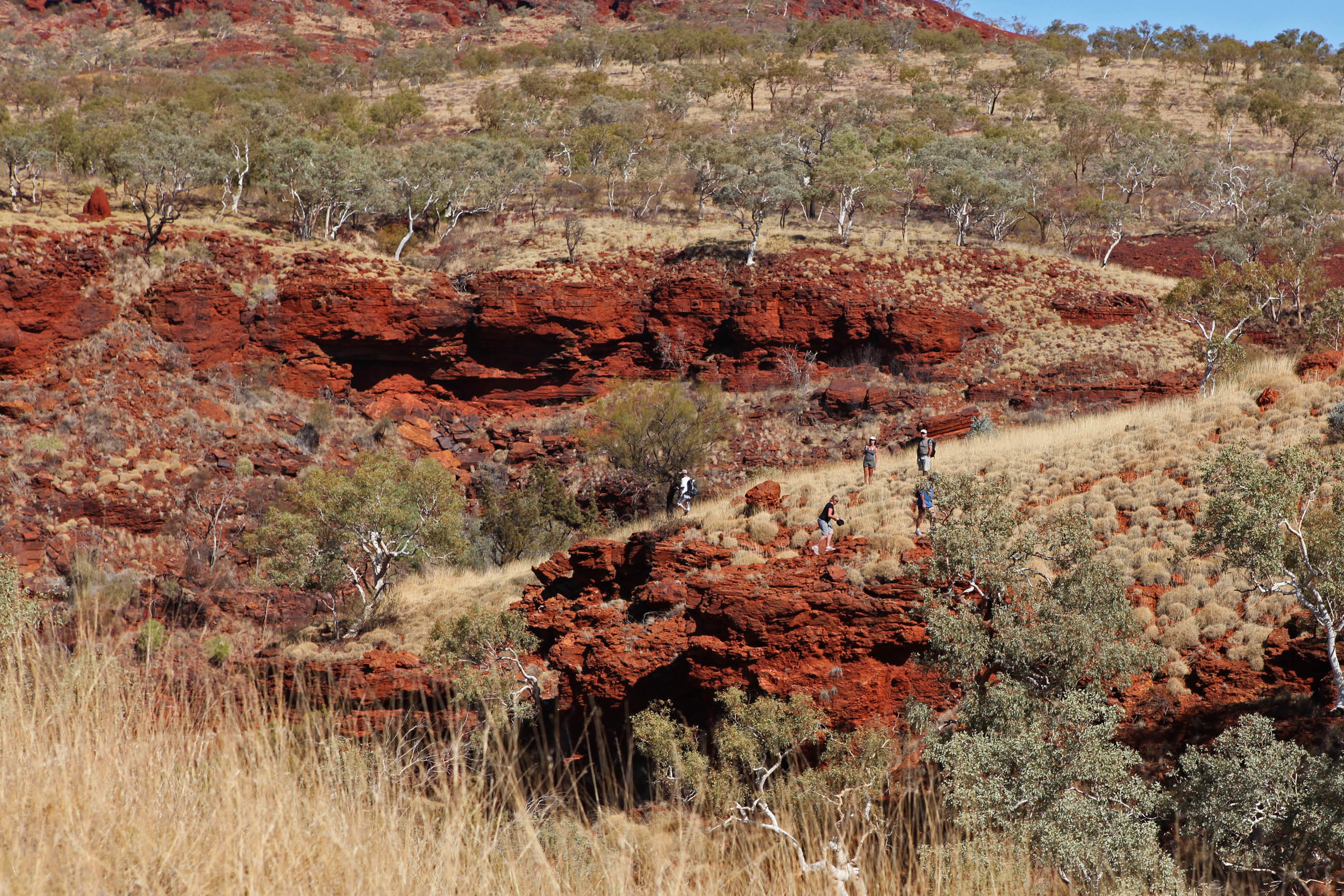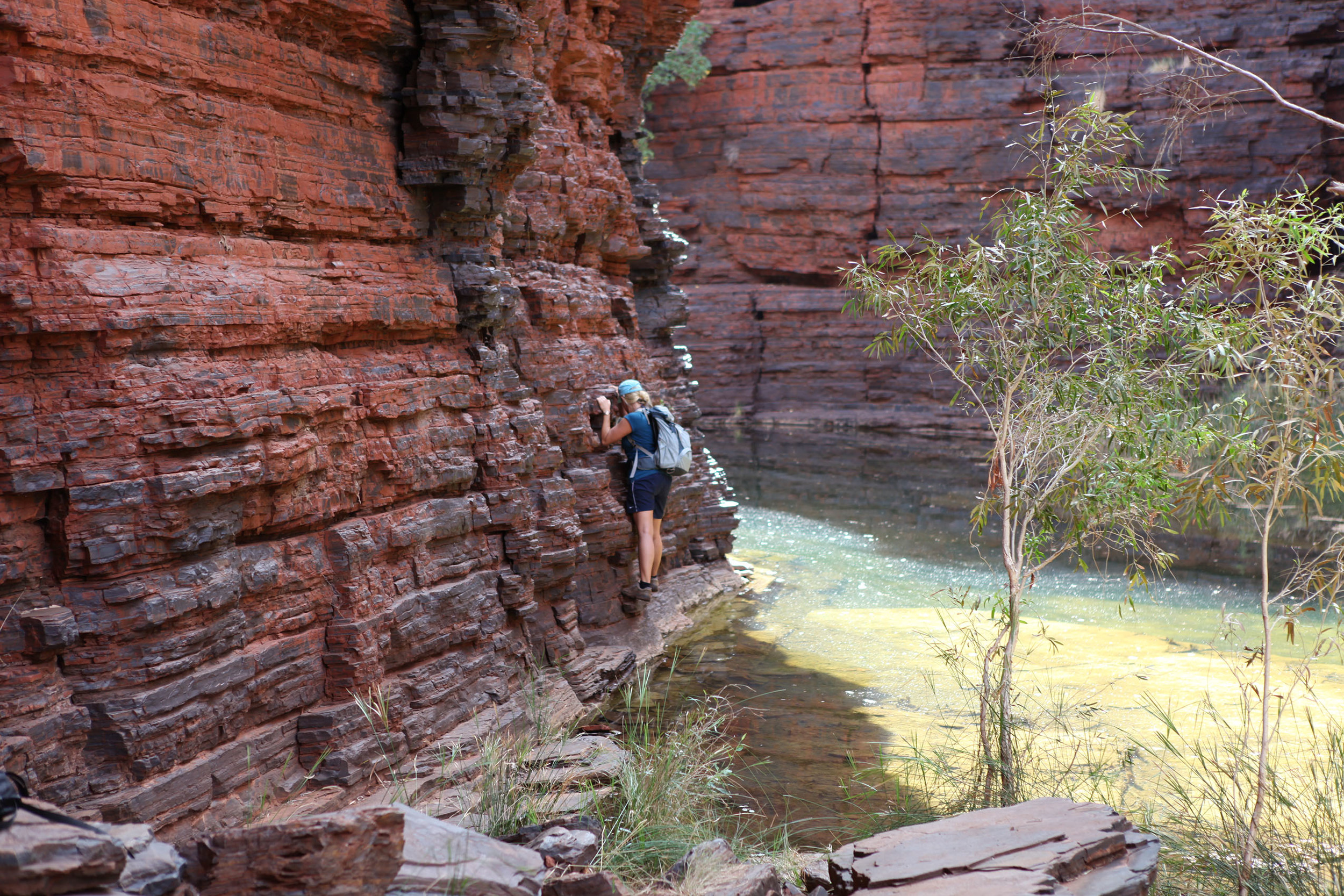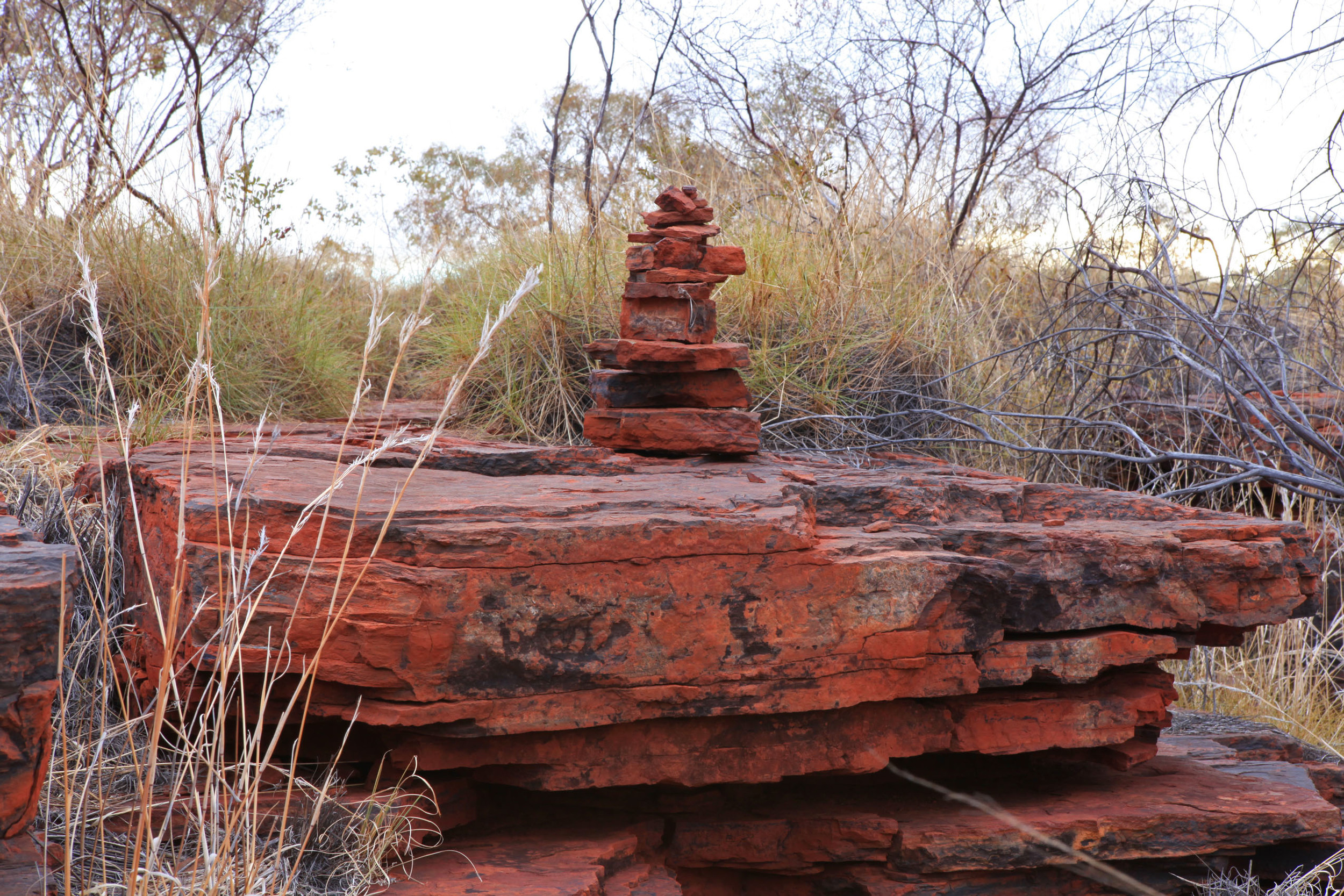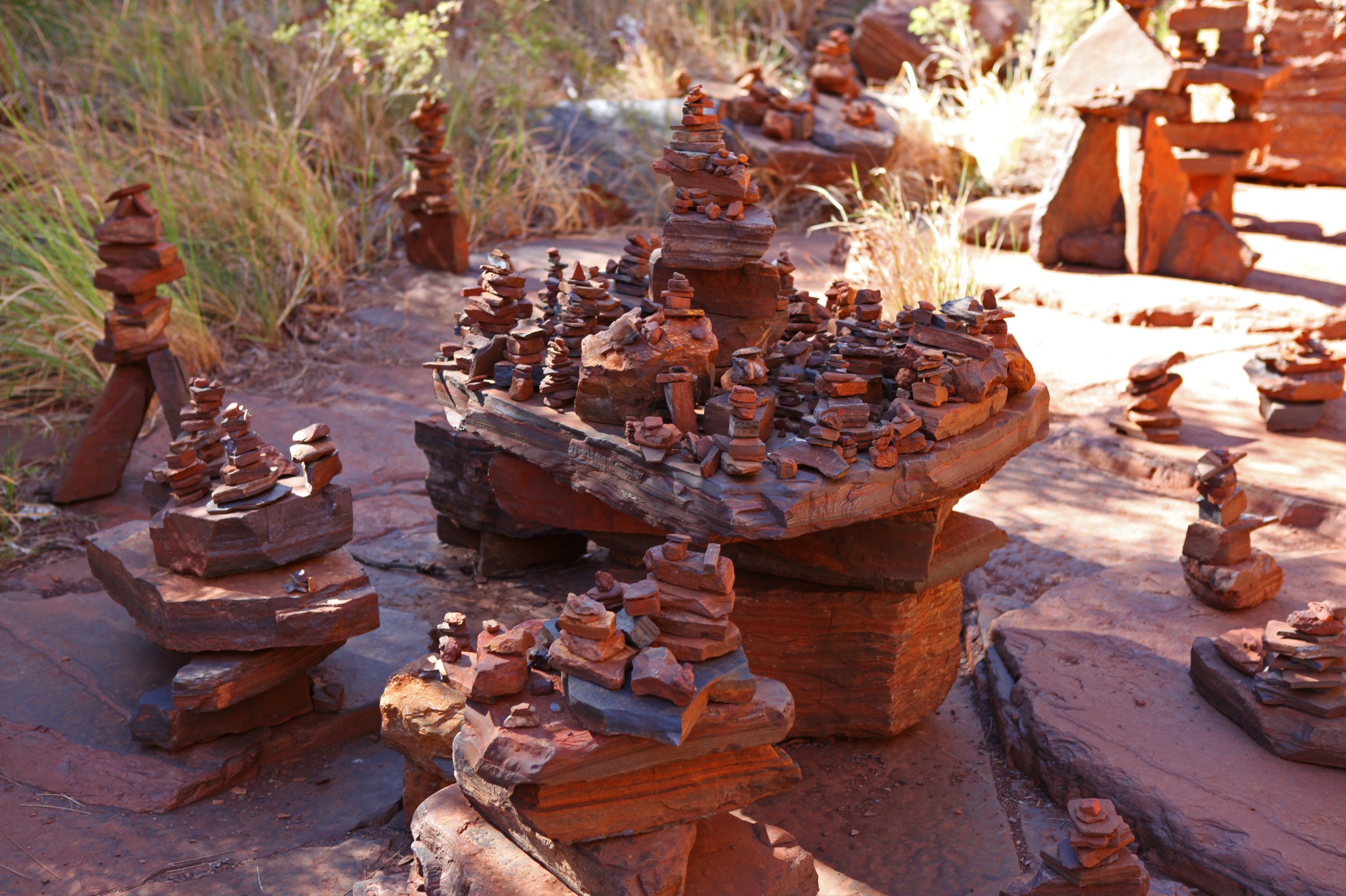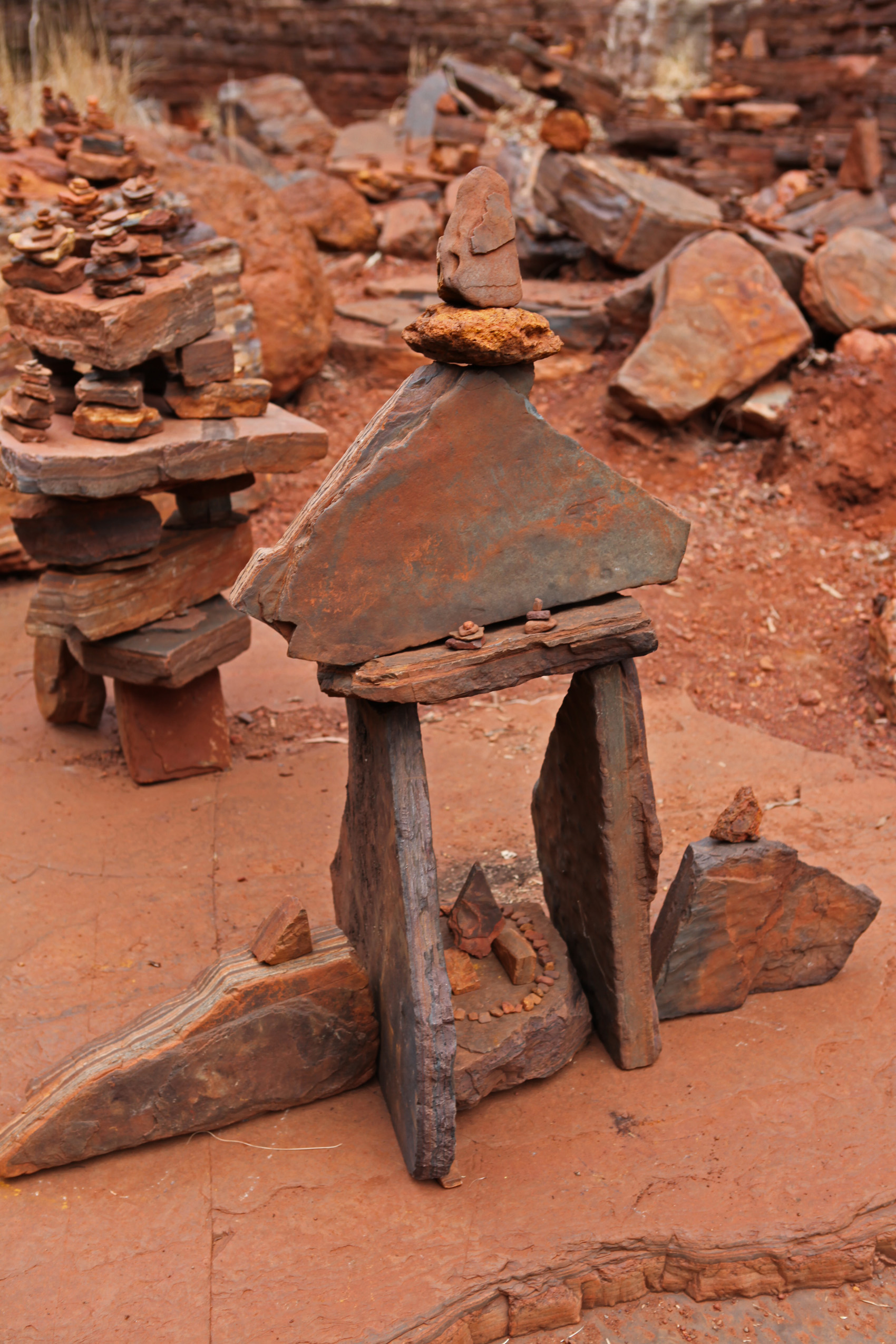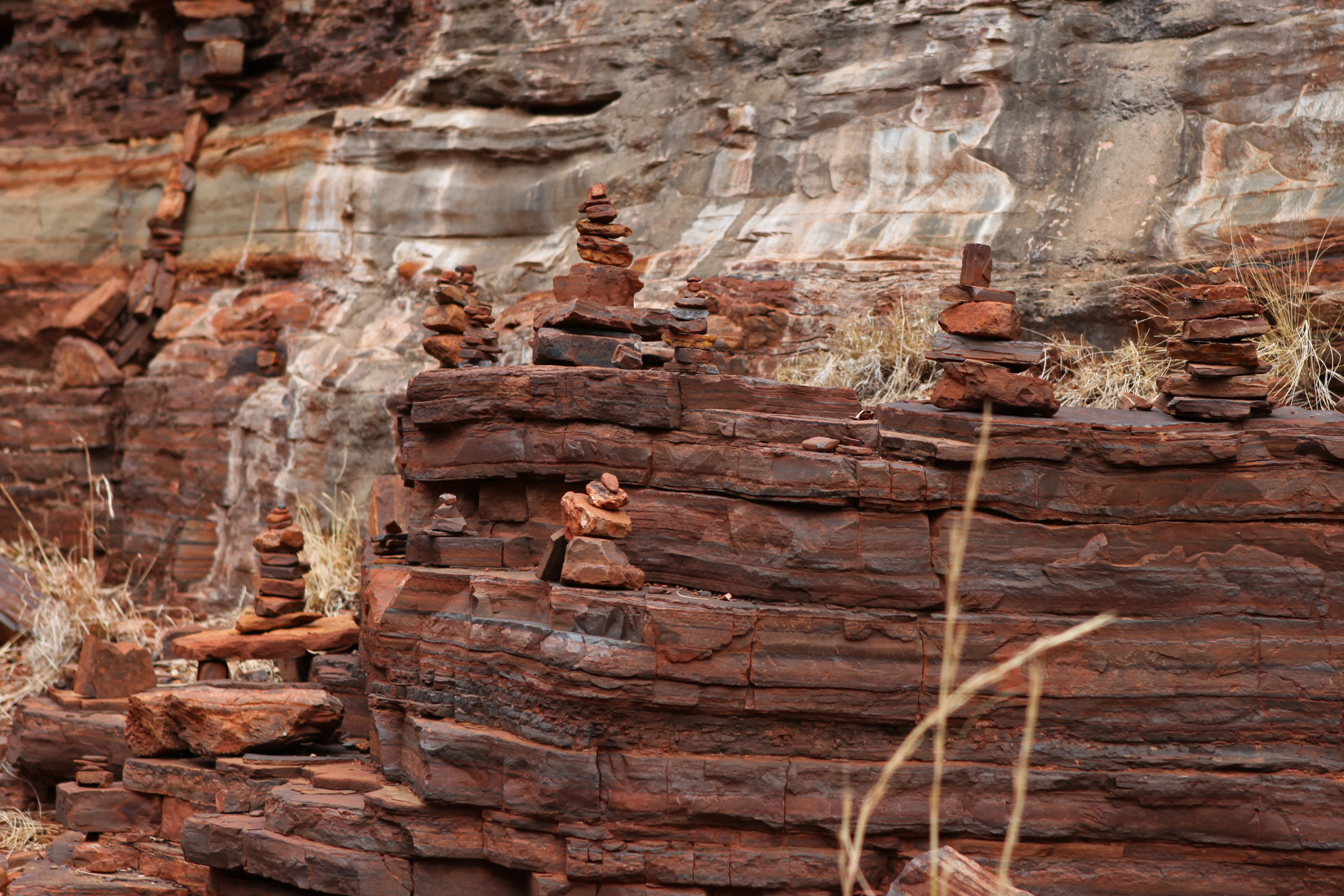This photo-essay is about Karijini National Park. The text and photos in the gallery go together. You can click through the photos as your read through the text.
Karijini National Park is located in the middle of the Pilbara region of WA and is some 1400 km north of Perth. It is managed by the Department of Parks and Wildlife of WA (DPaW).
The climate is semi-arid with highly variable rainfall mainly in the summer from thunderstorms and cyclones. The landscape is ancient (2.5 billion years old) , typically vast areas of flat land between remnant mountain ranges and deep and often long gorges (photos 1-5). Summer temperatures often exceed 40C. The nearest towns are Newman, Paraburdoo and Tom Price. Access to park is via a bitumen road, but most of the other roads are gravel that become highly corrugated during the busy winter months. There is a DPaW managed camping site a Dale Gorge (the only one)(photos 6-8) and there is the Eco Retreat near Joffre Falls (photos 9-13) - see also the DPaW map (photo 14). The resort is self sufficient for water and power and has very basic facilities. It’s isolation makes for spectacular night skies and sunrises (photo15-18). There is also a visitors centre located at the end of the bitumen road, that has been designed to be both self sufficient and blend into the landscape (photos 19-25). Whilst the vegetation in the upland and flat areas are typical of semi arid climates, the gorges provide protection from the sun, and the permanent pools and occasional springs produce vegetation more typical of rain forrest the pools are fauna refuges during the dry months and popular swimming pools (photos 26-34).
The combination of remoteness, dangerous landscape, heat and lack of water, floods when the rain often comes (cyclones) makes for some interesting and challenging planning and management for DPaW. The main management concern is keeping visitors safe without taking too much away from the experience and views (photos 35-39).
DPaW used rock cairns to help mark out some of the track in the flat and often complex landscape (photo 40). In a section of Dale Gorge some creative tourists started to make their own small rock cairns, and this has caught on and now there are several areas where there are hundreds of these pieces of rock art (photos 41-48).

